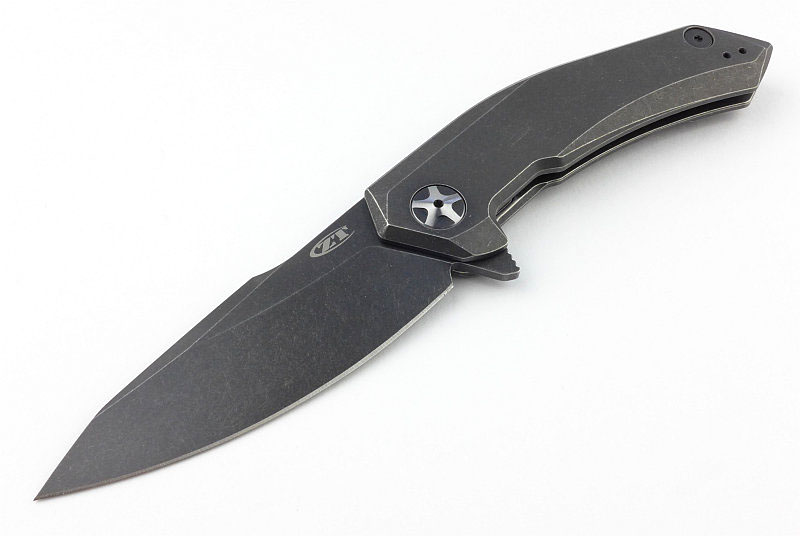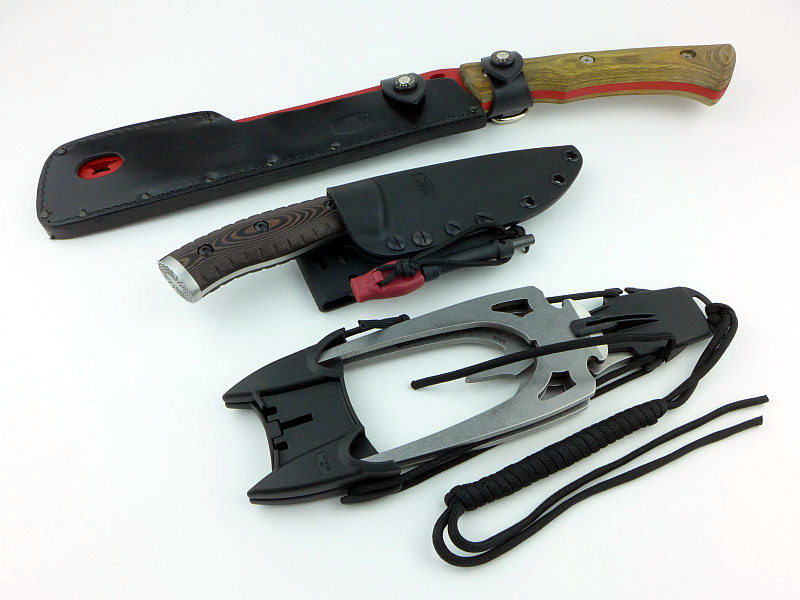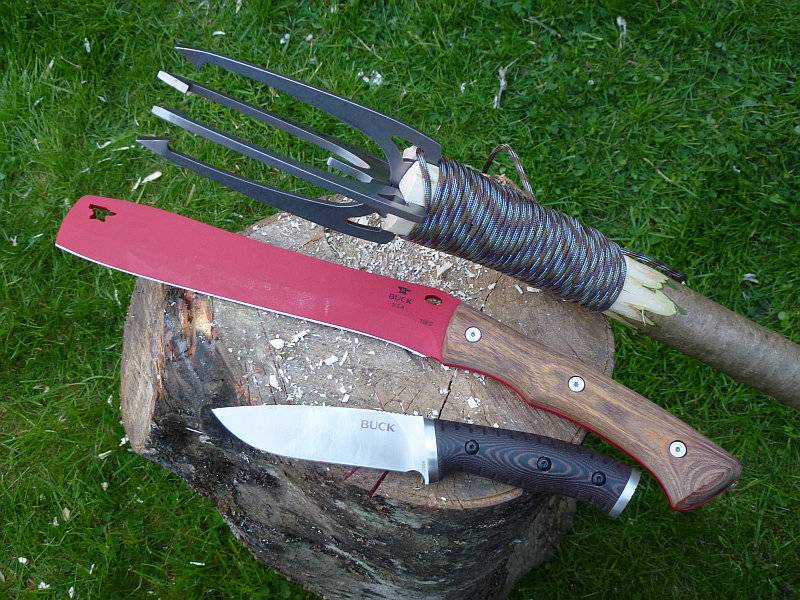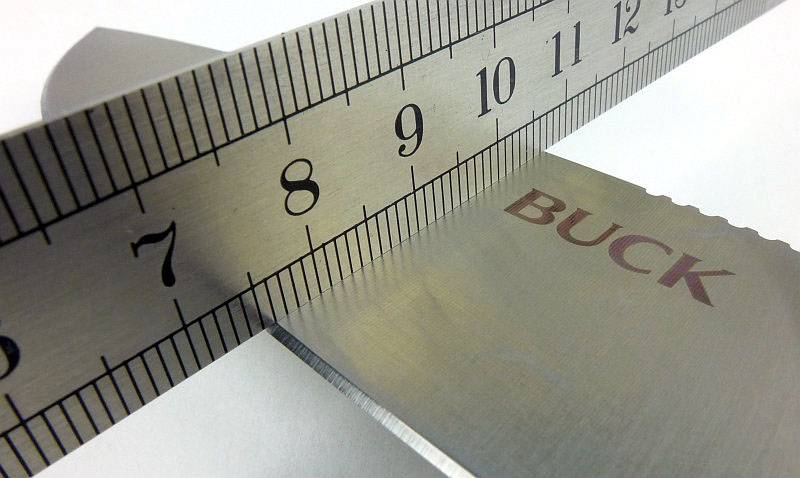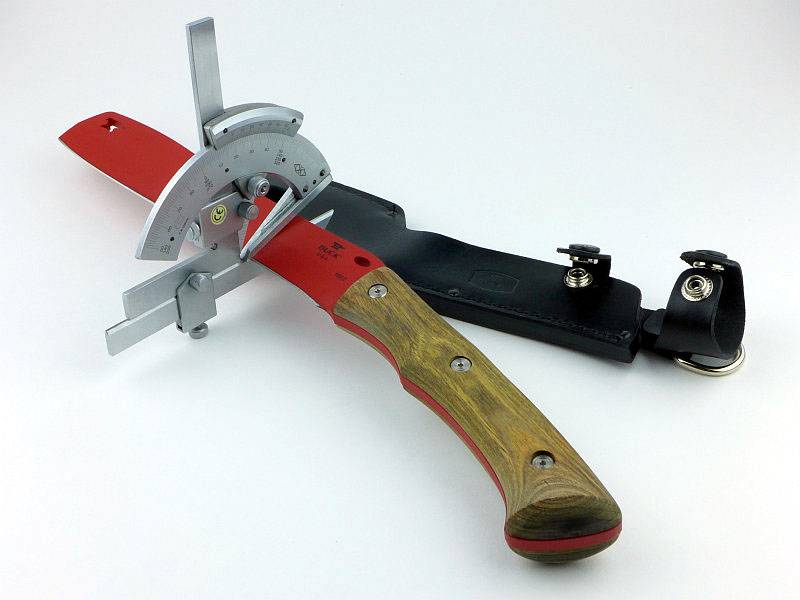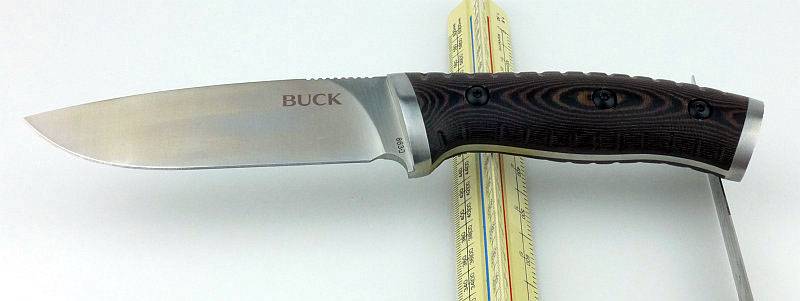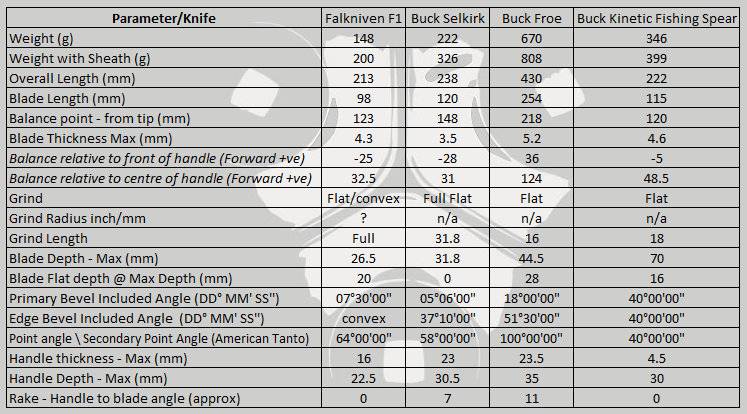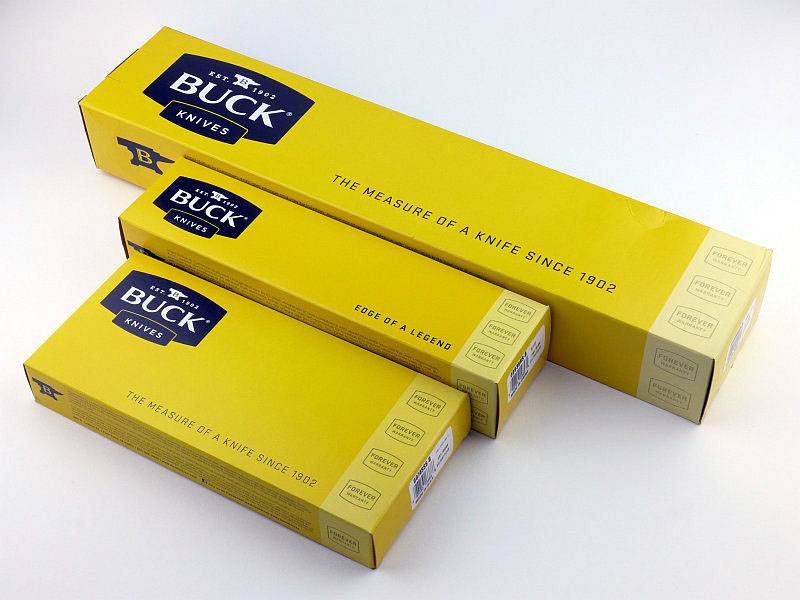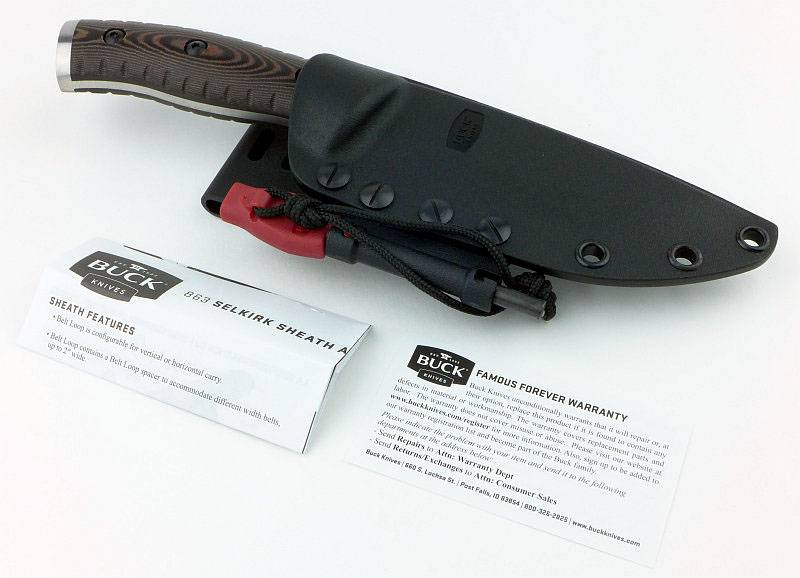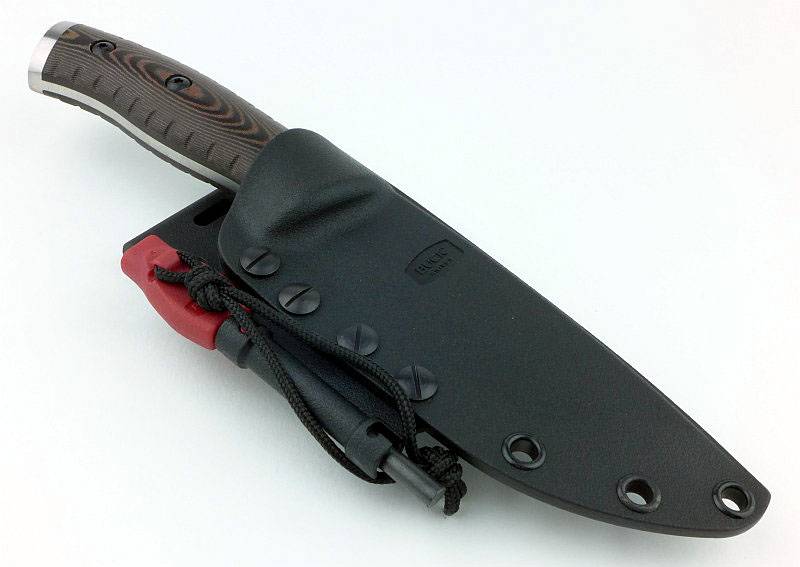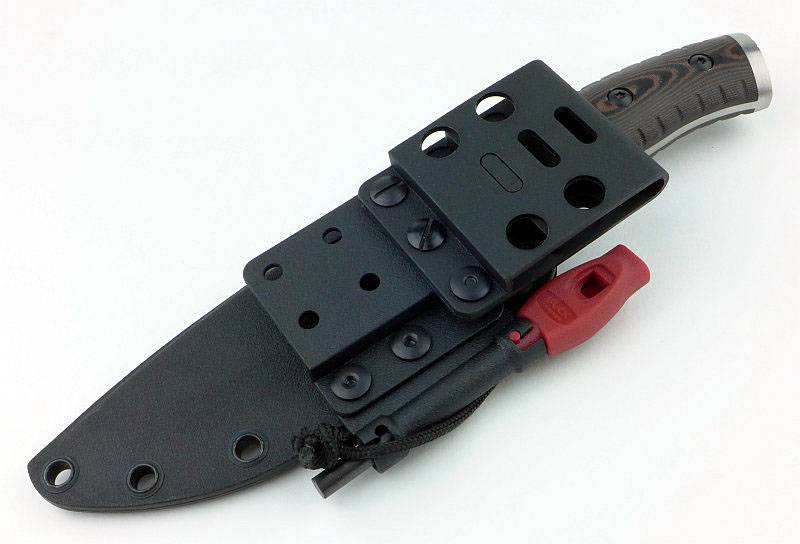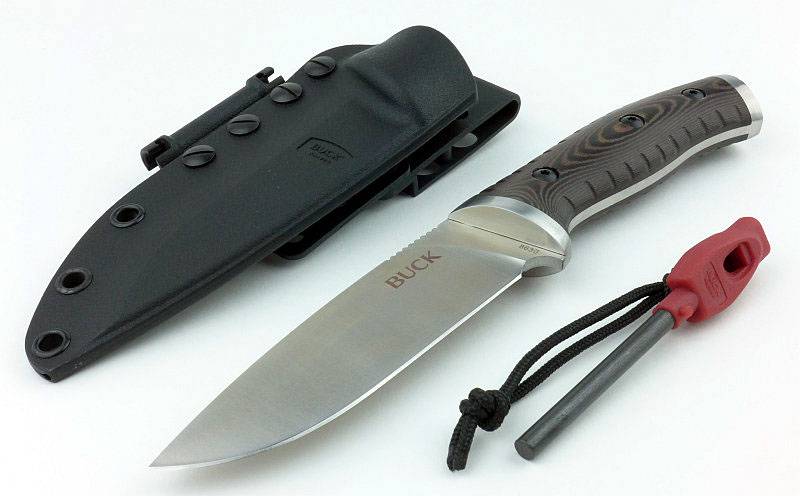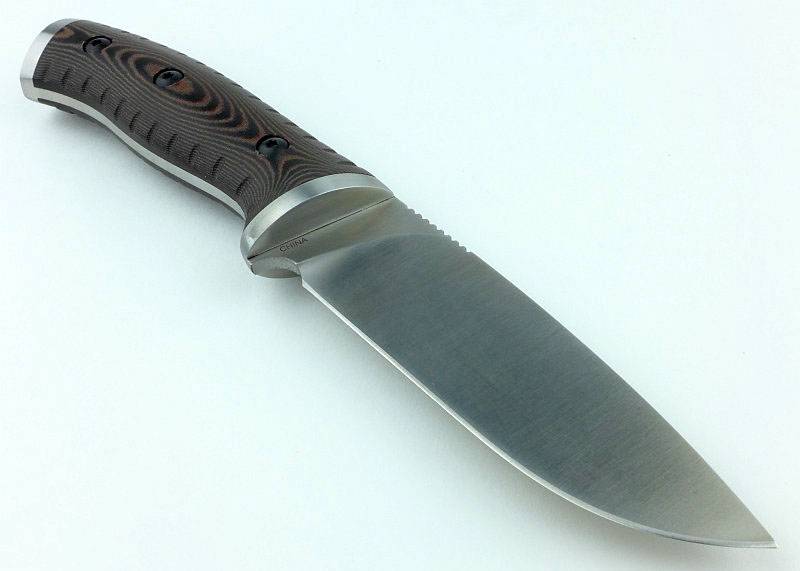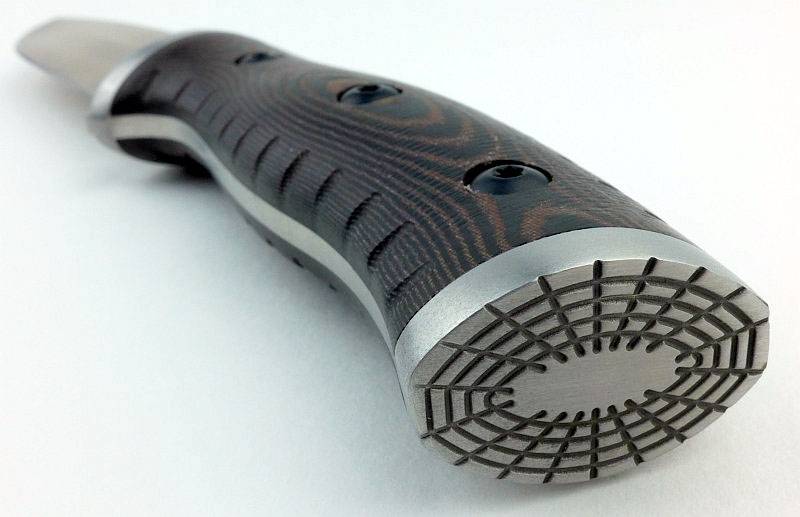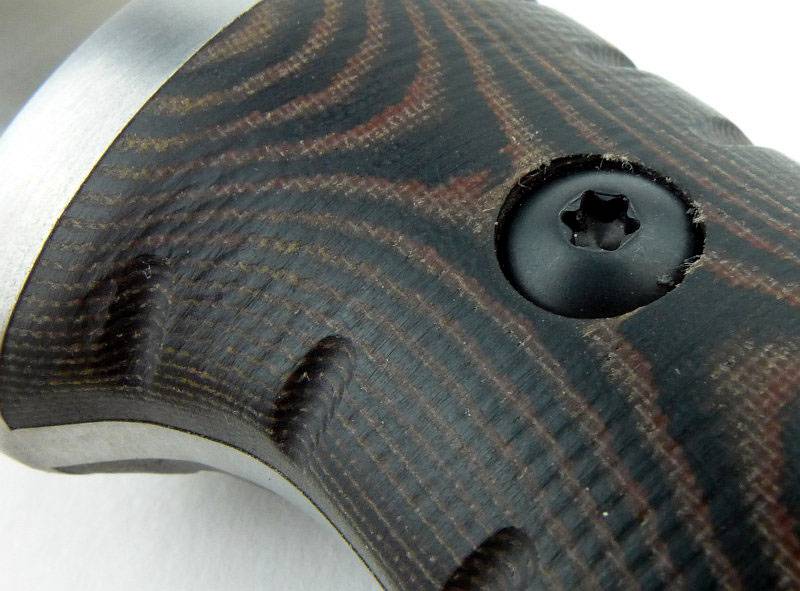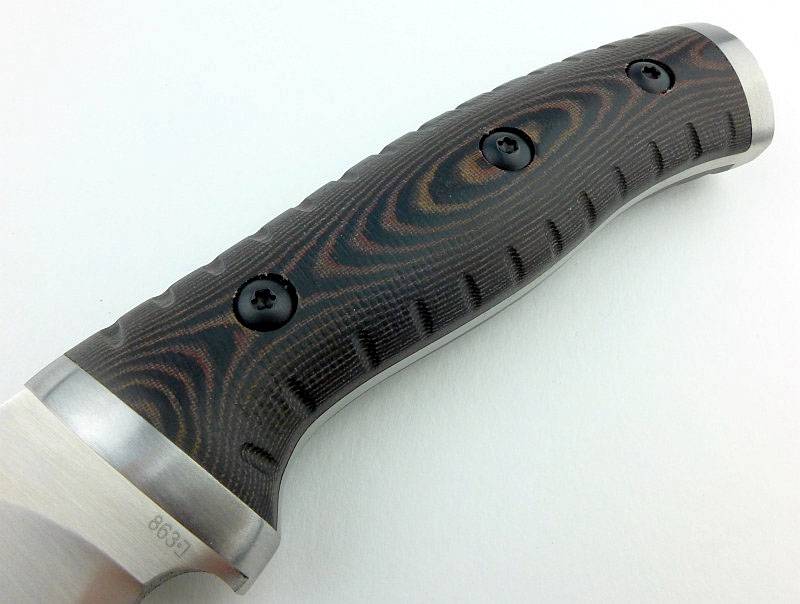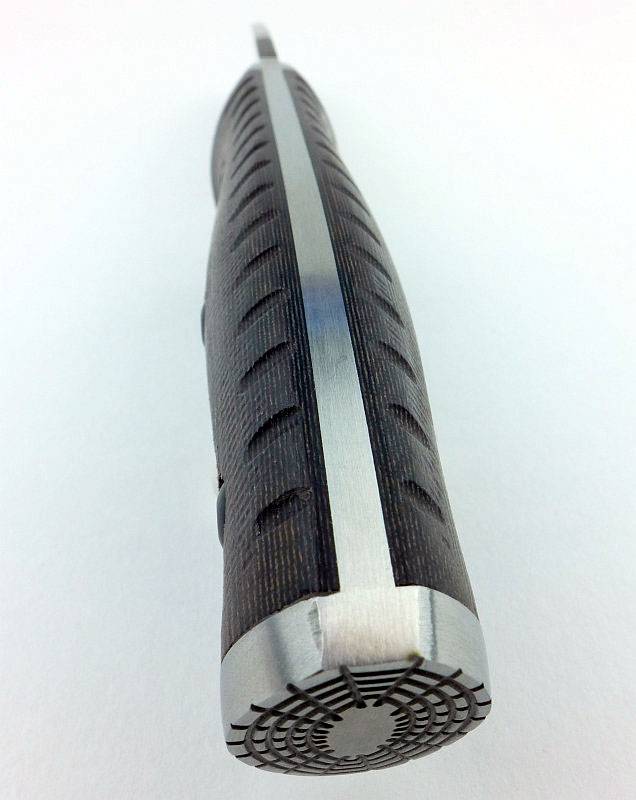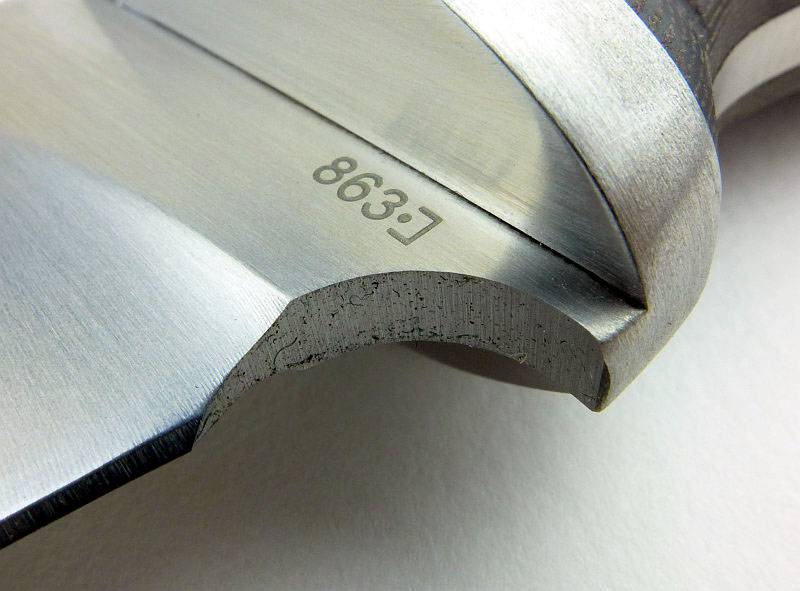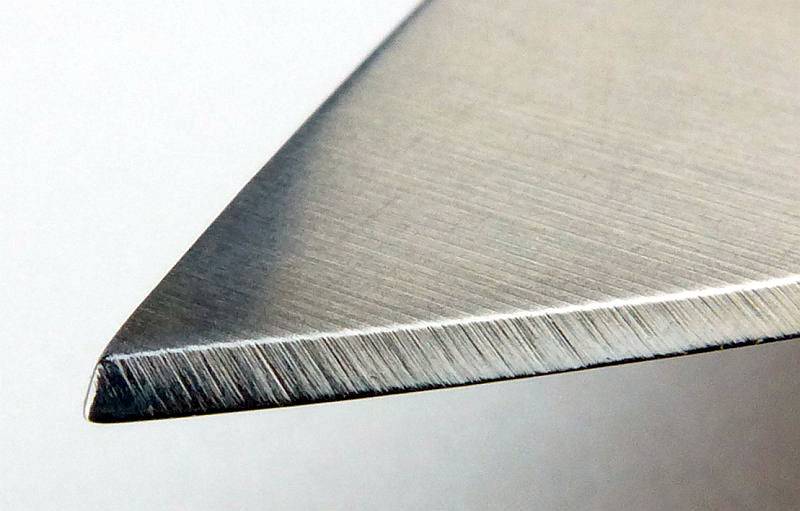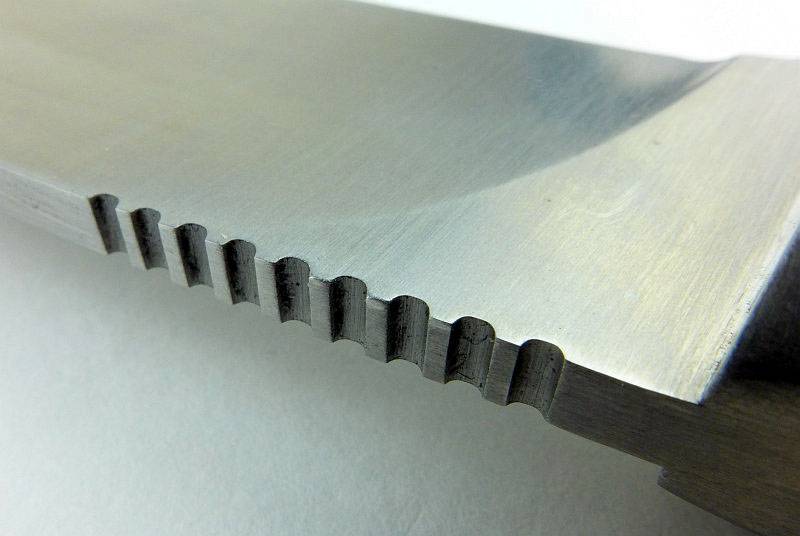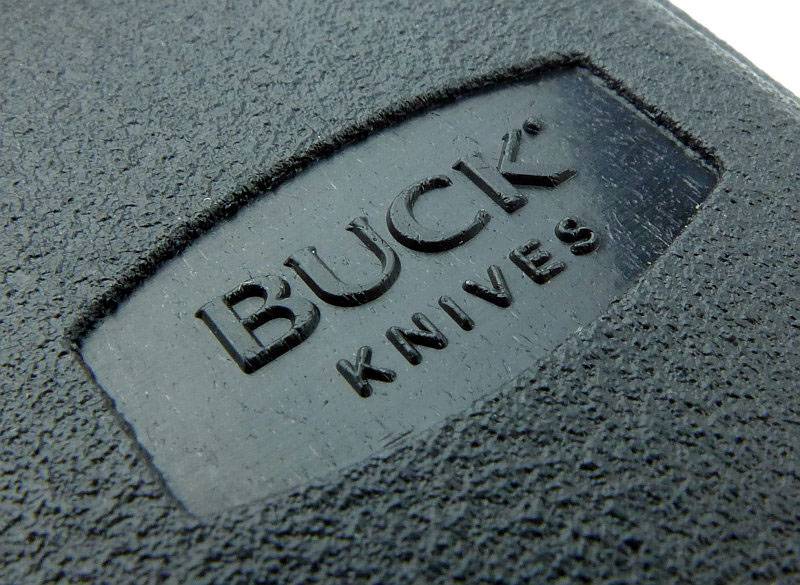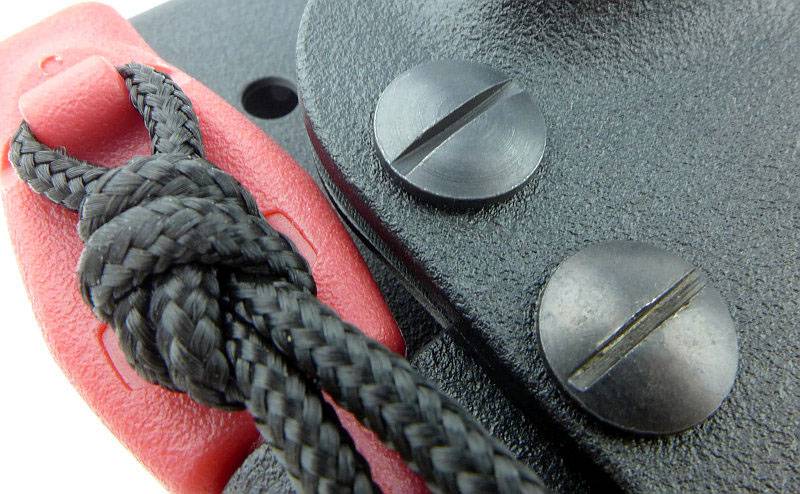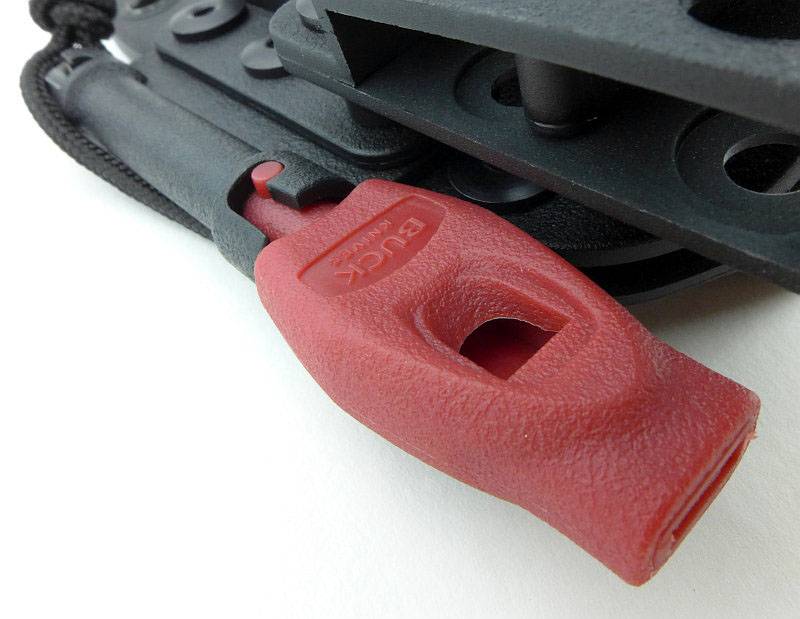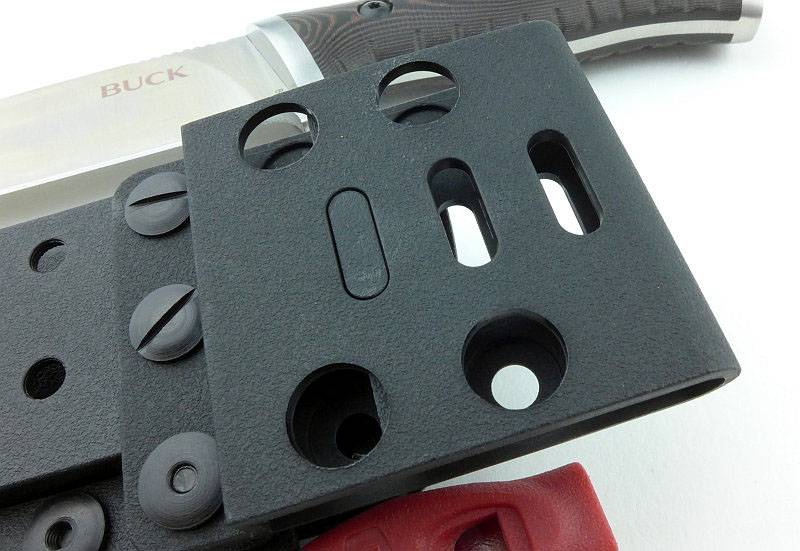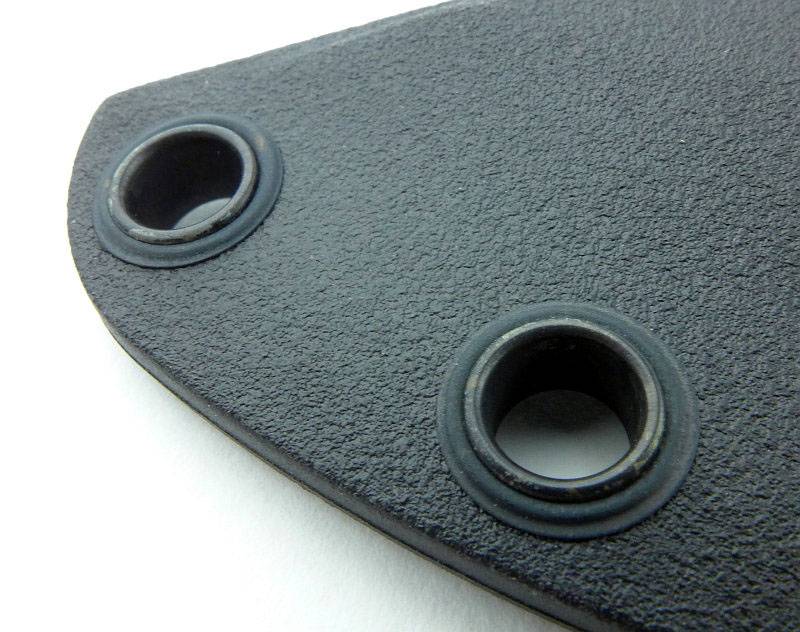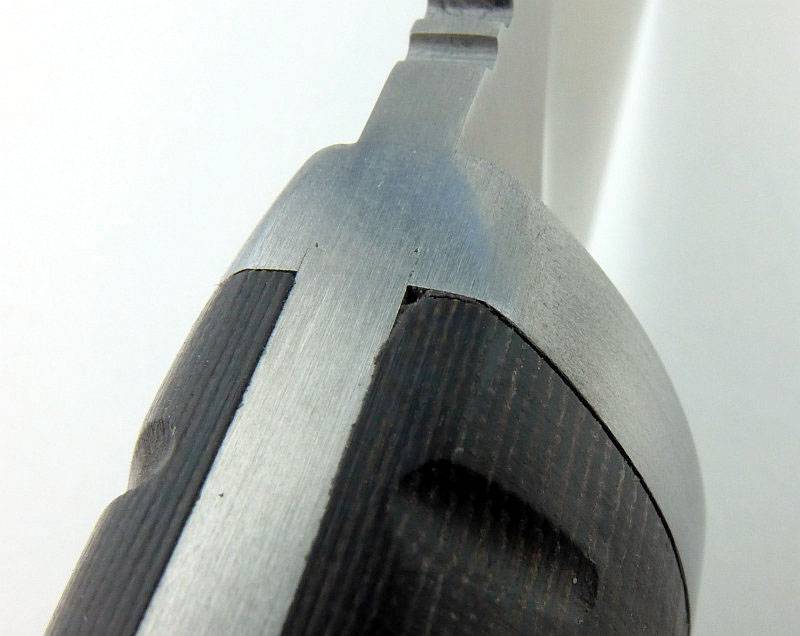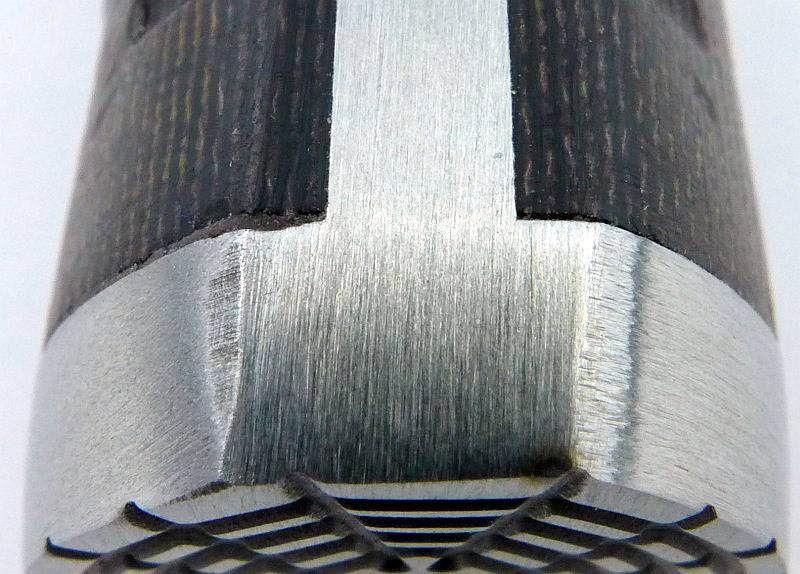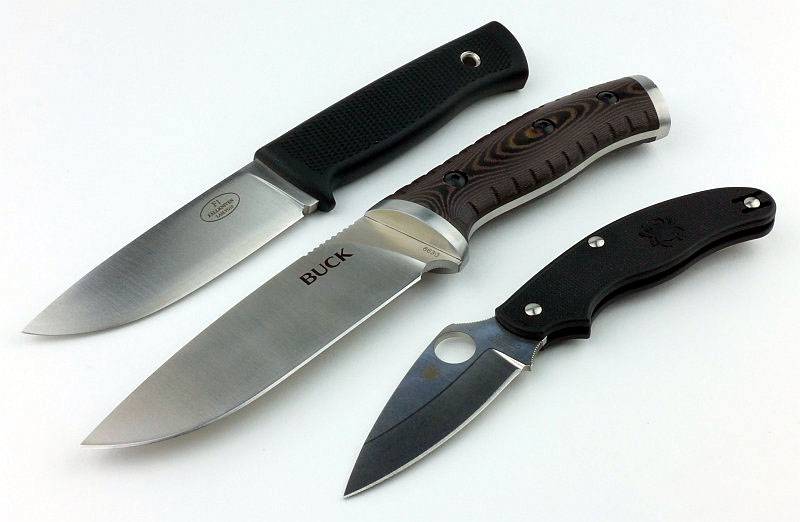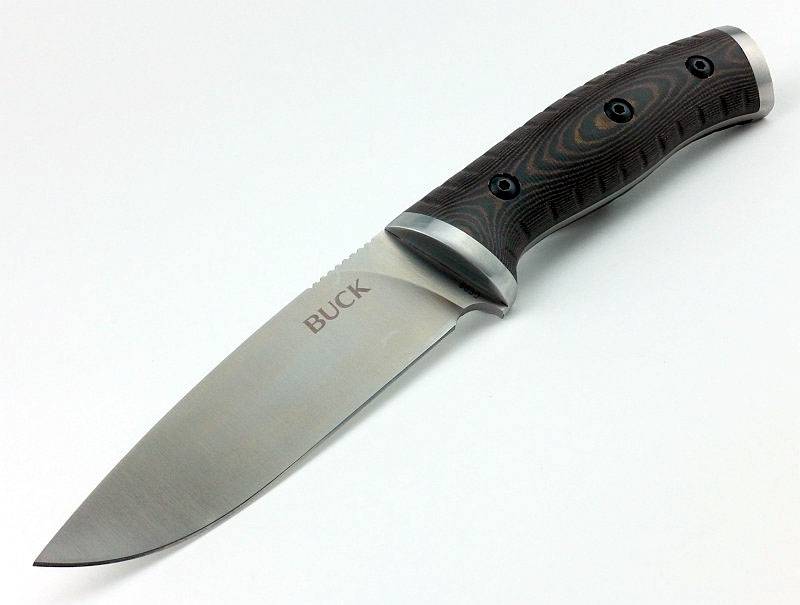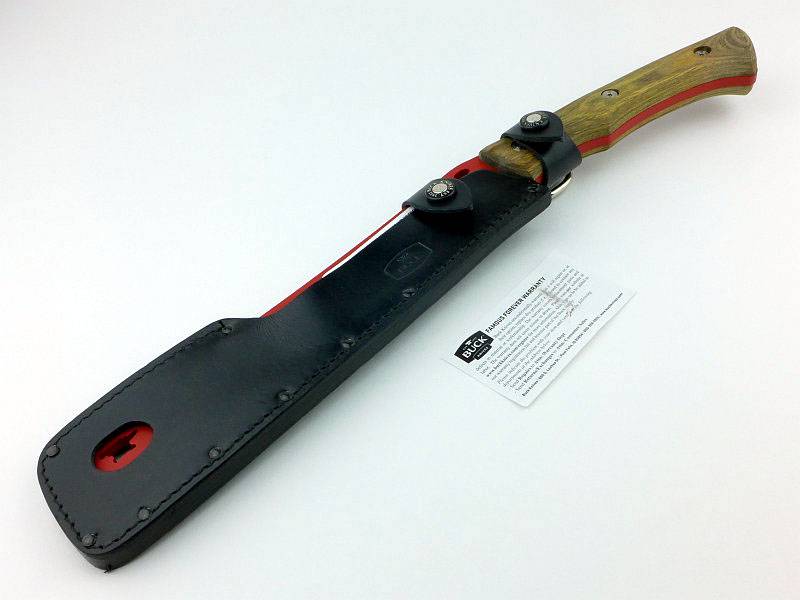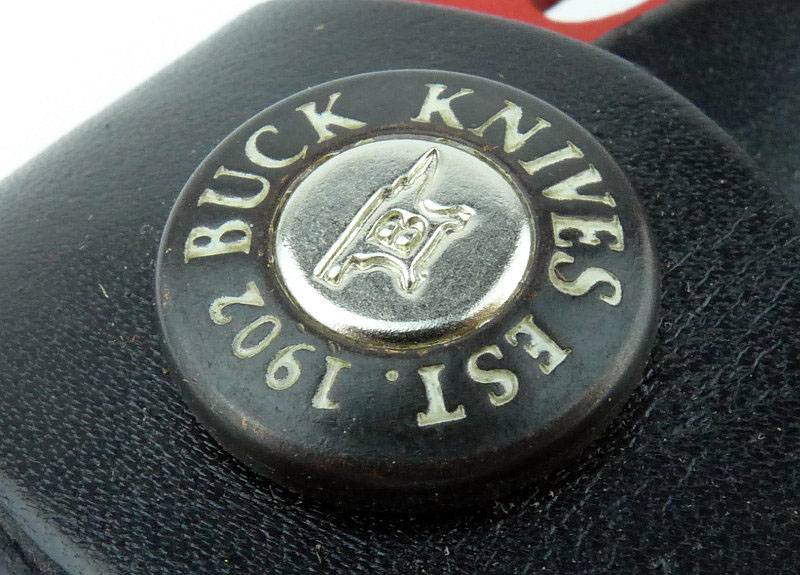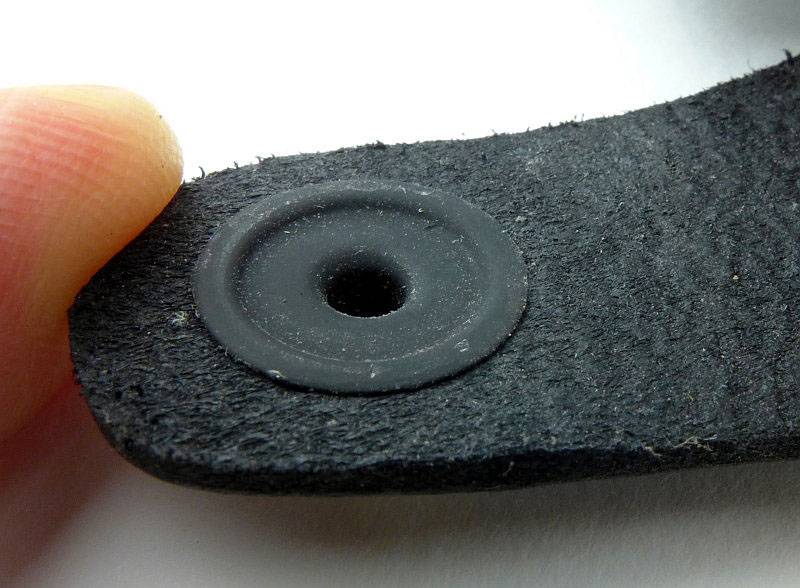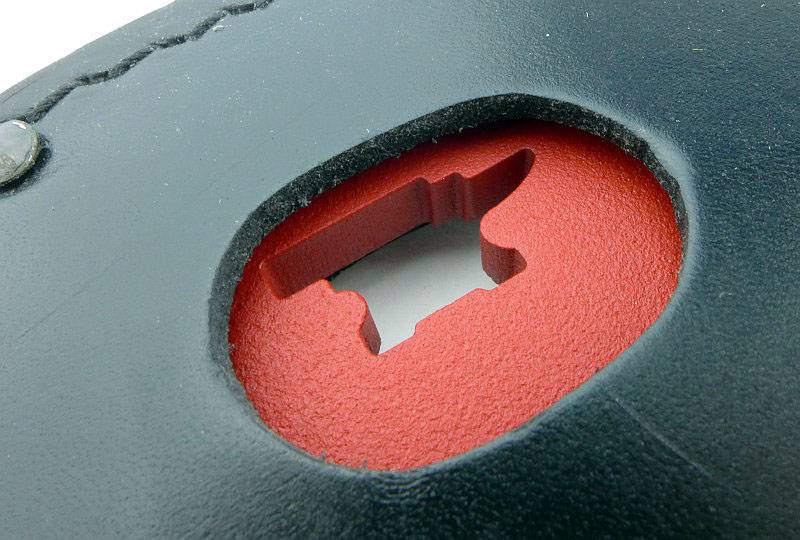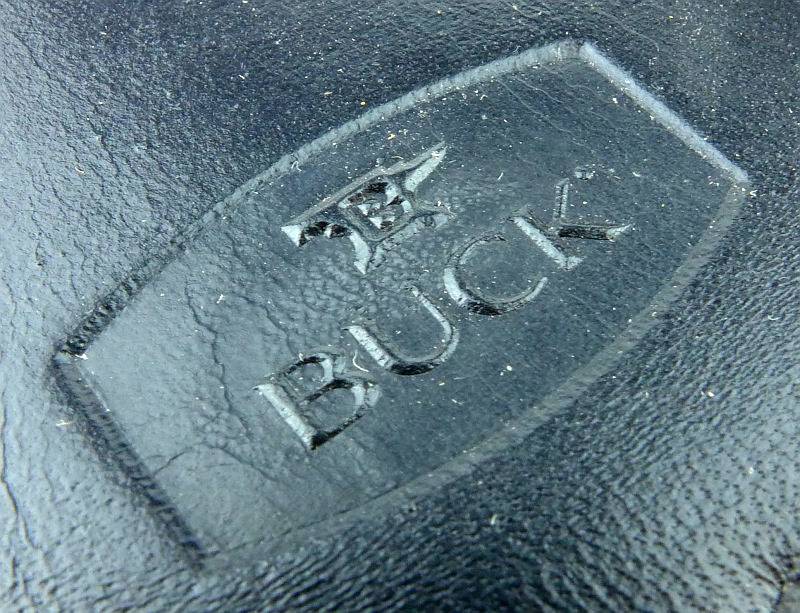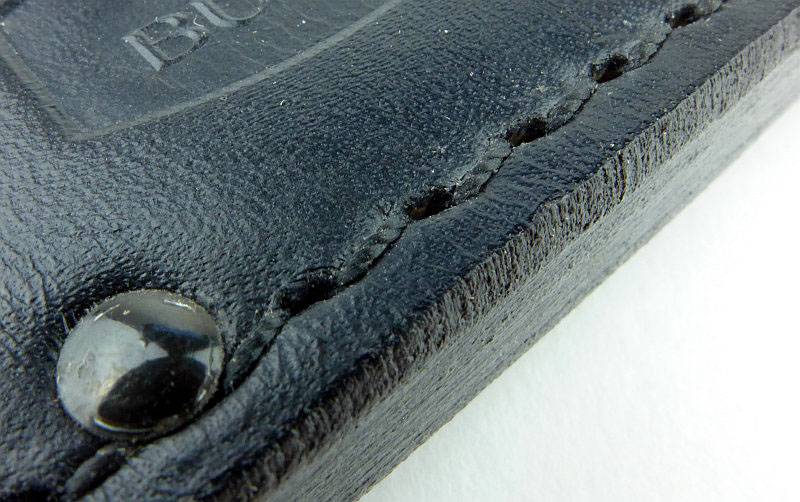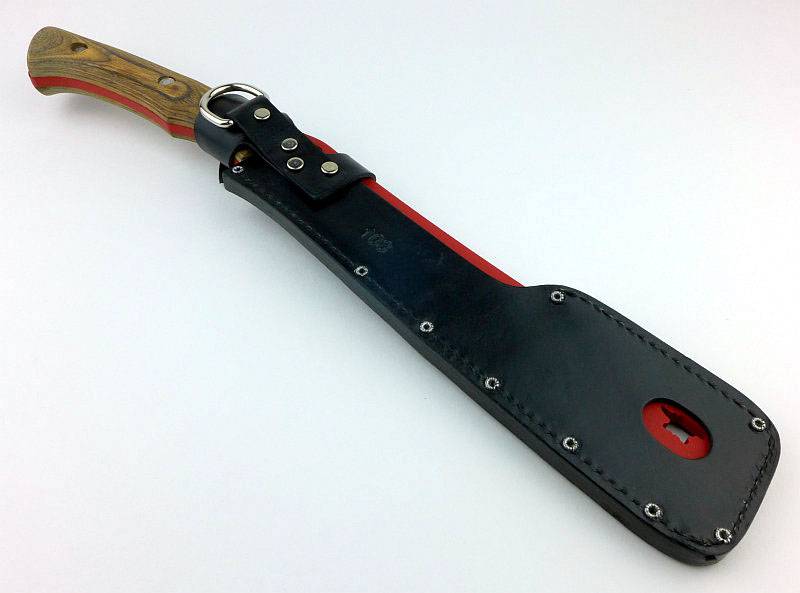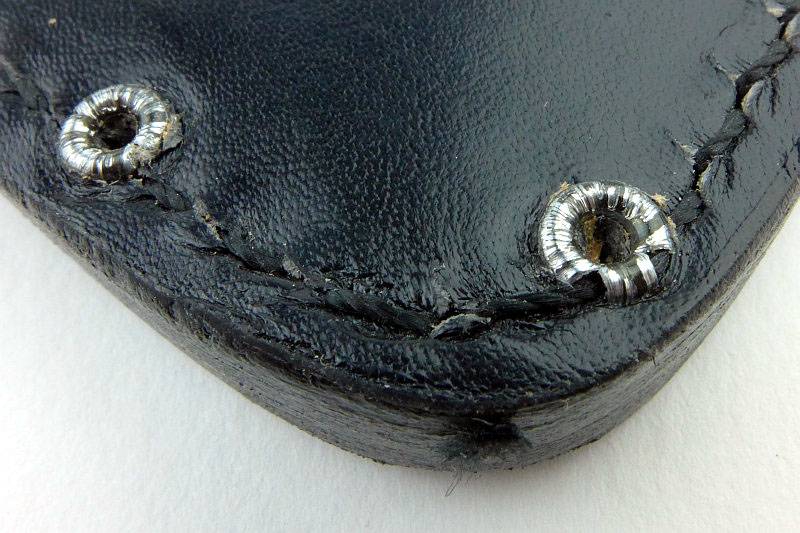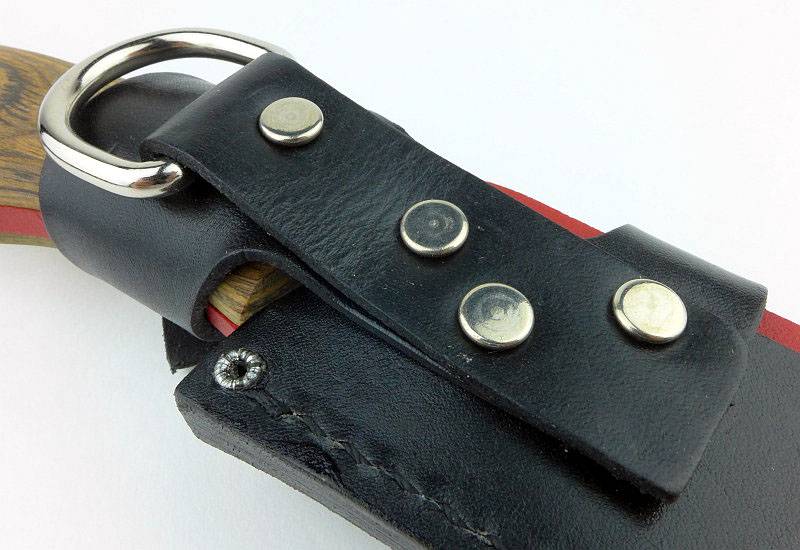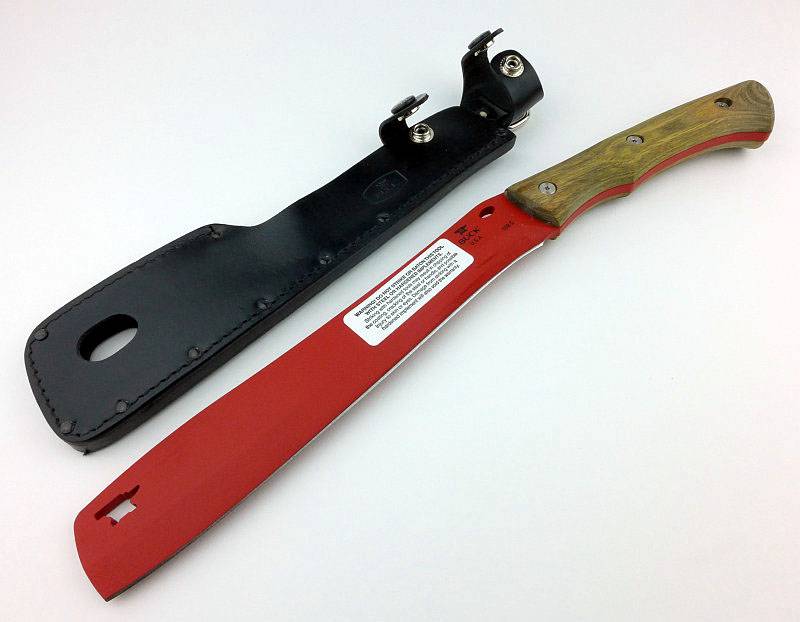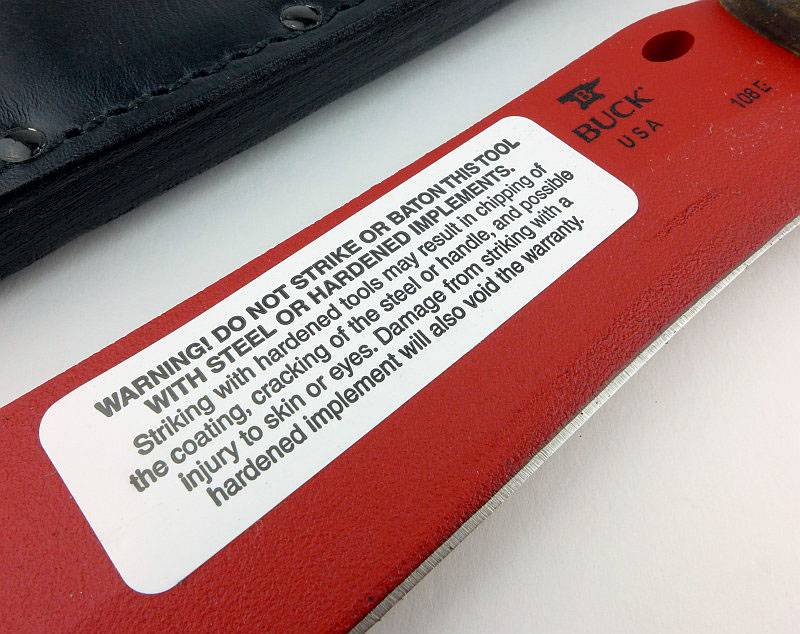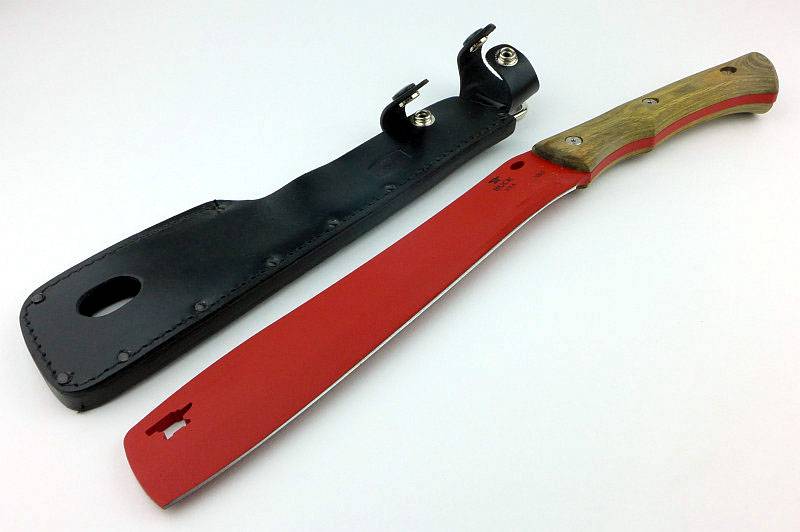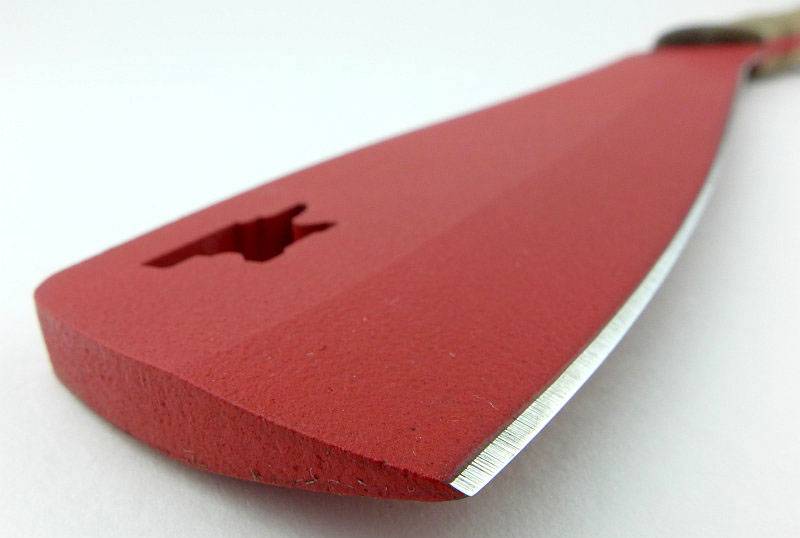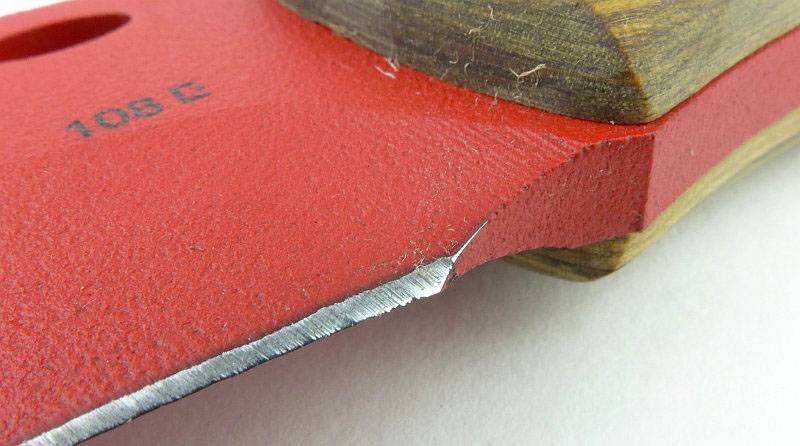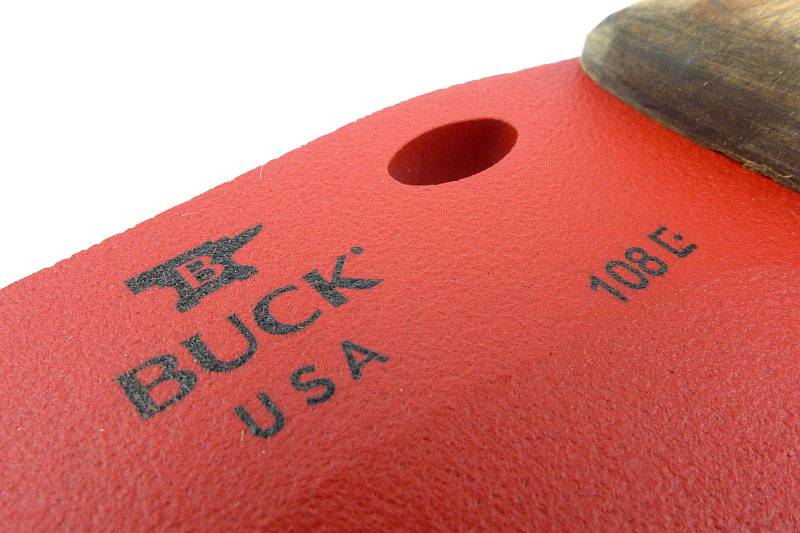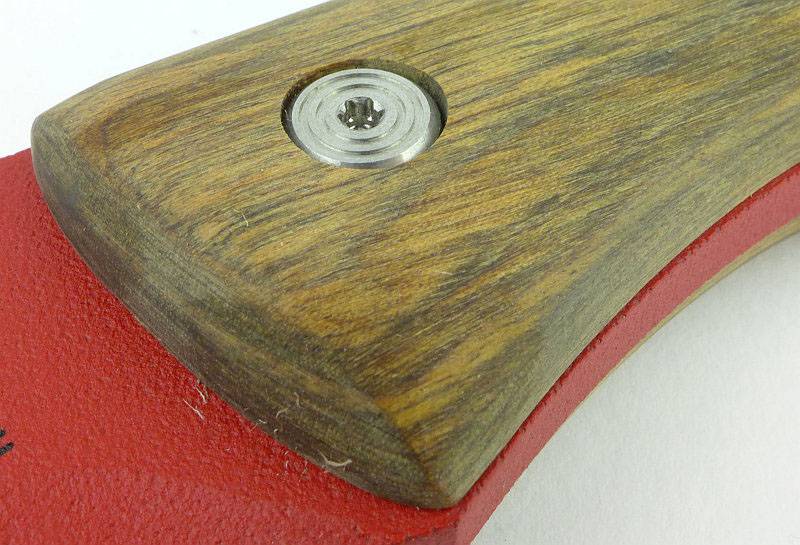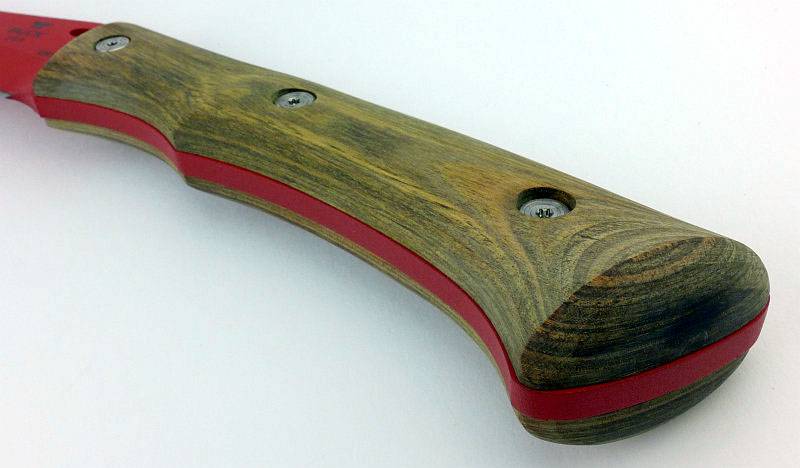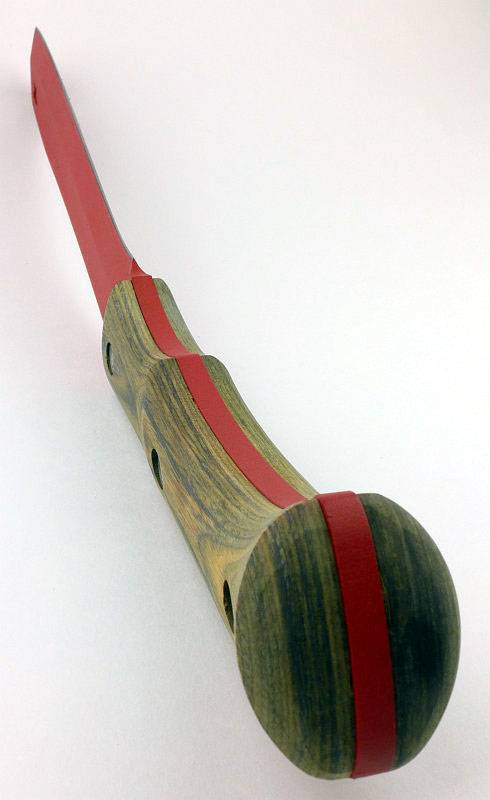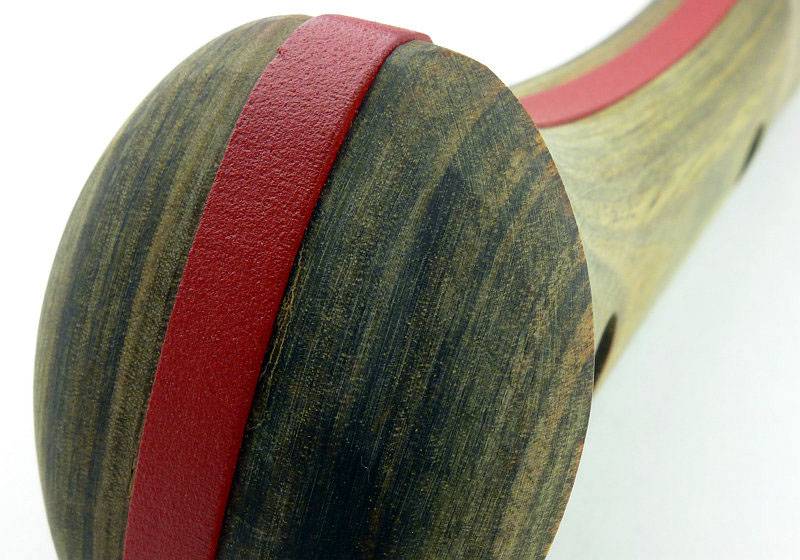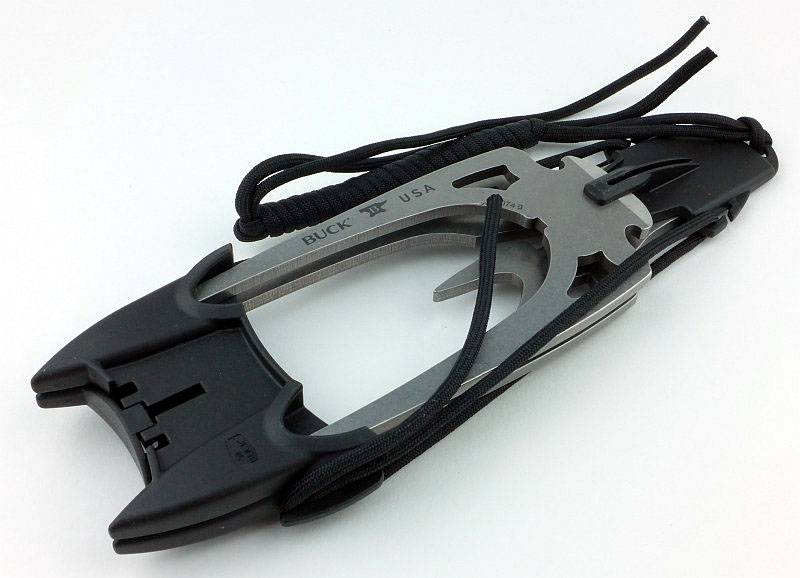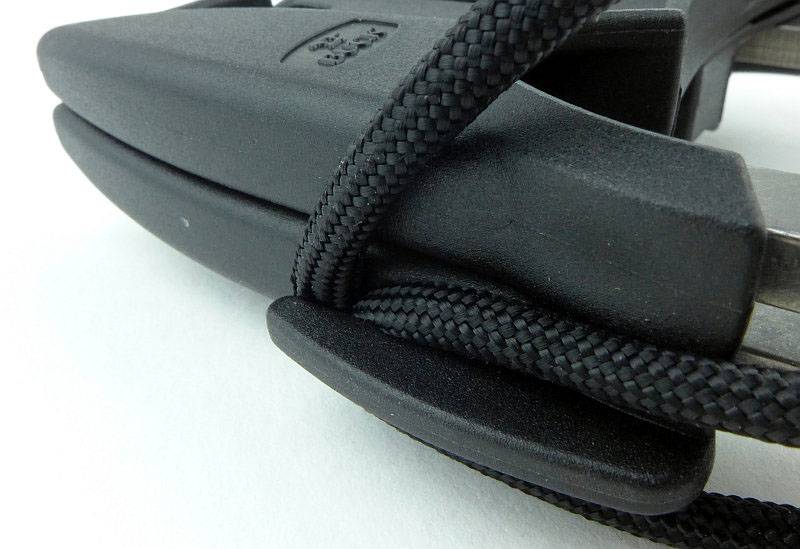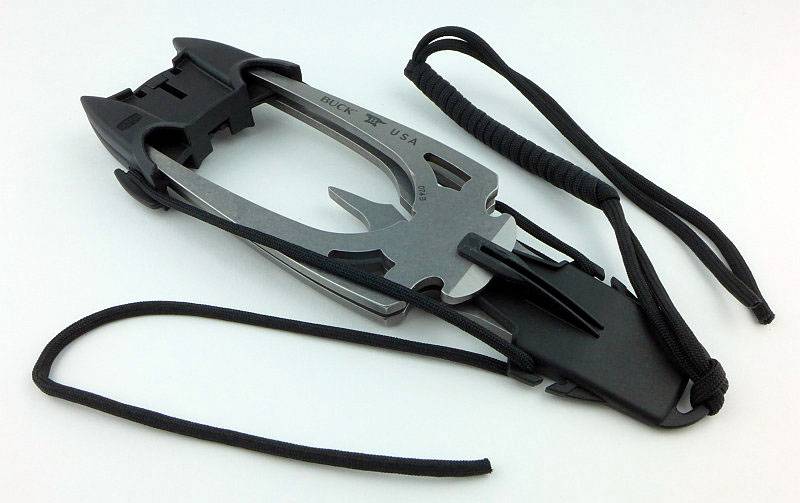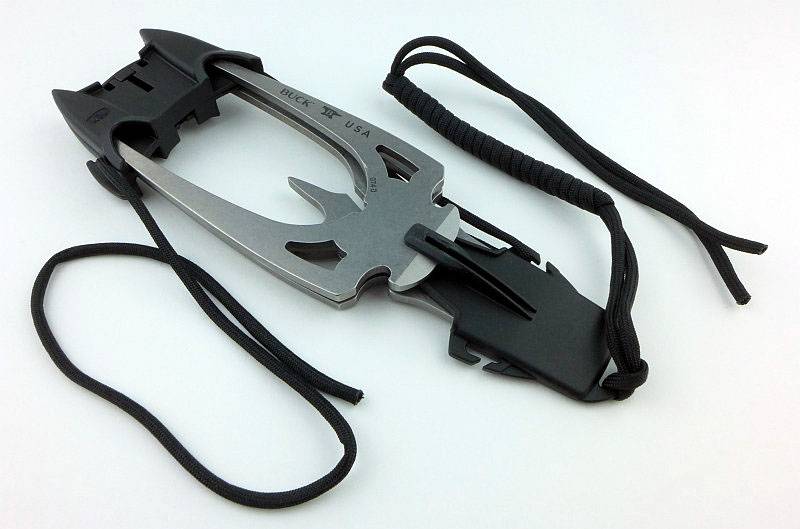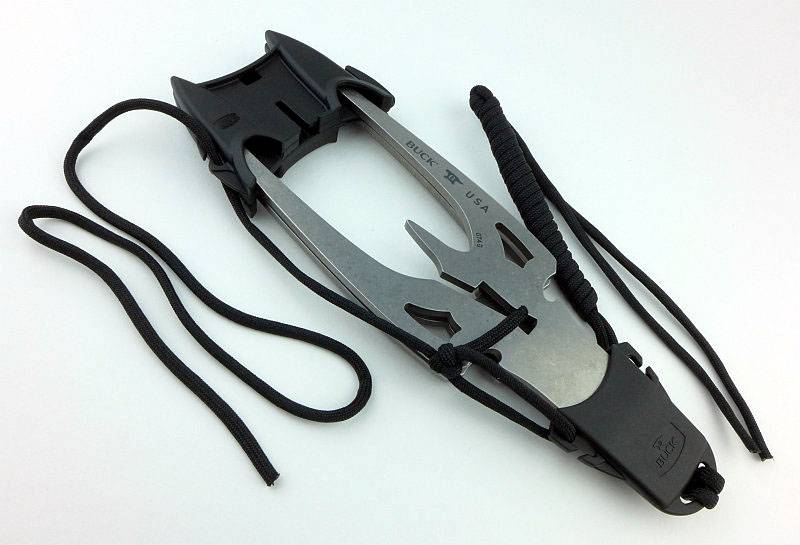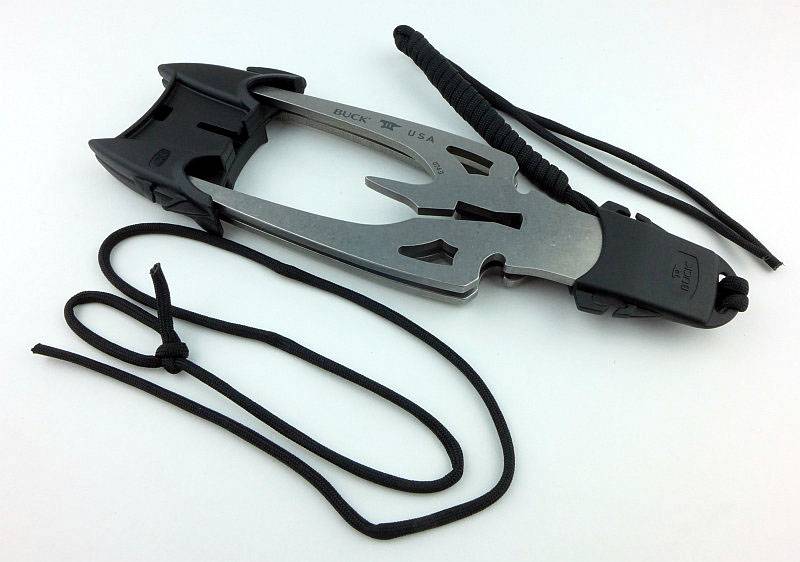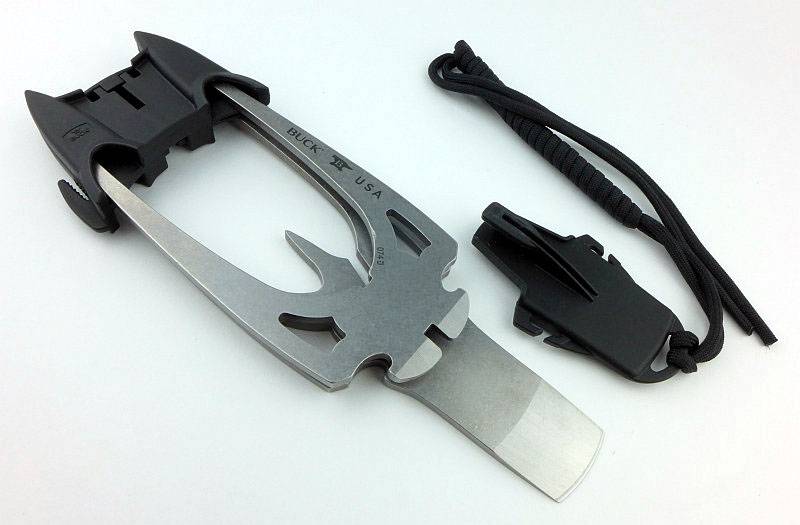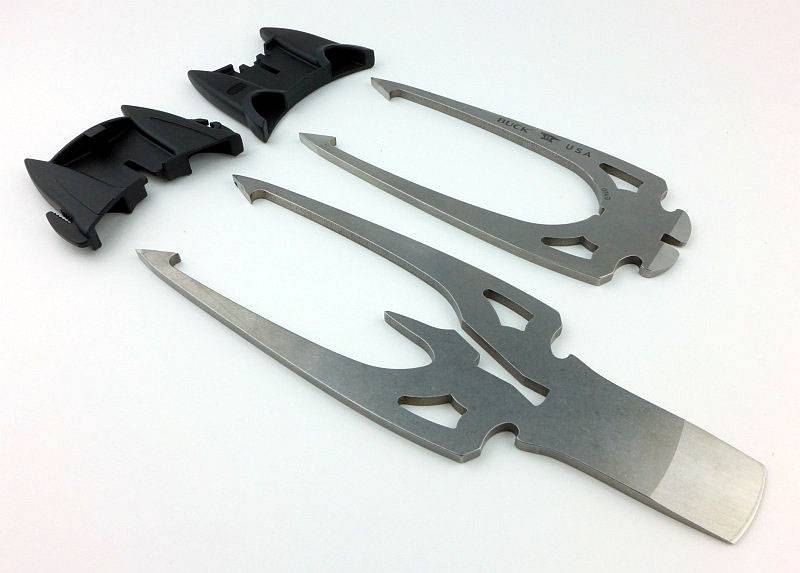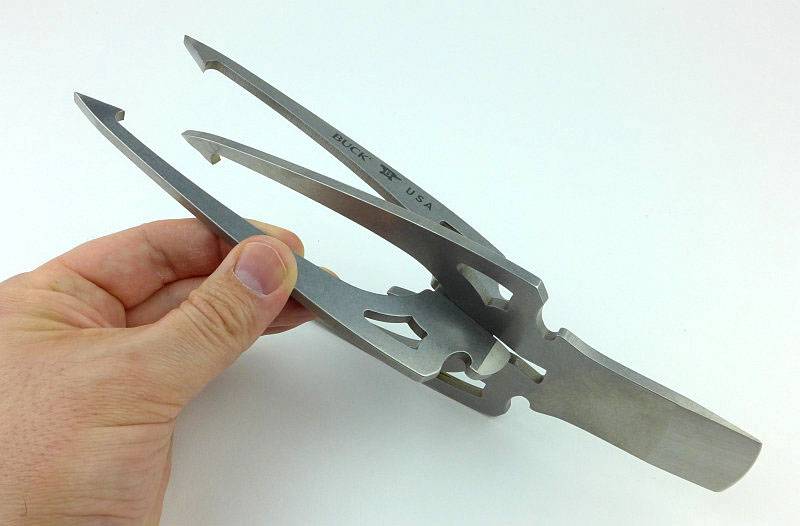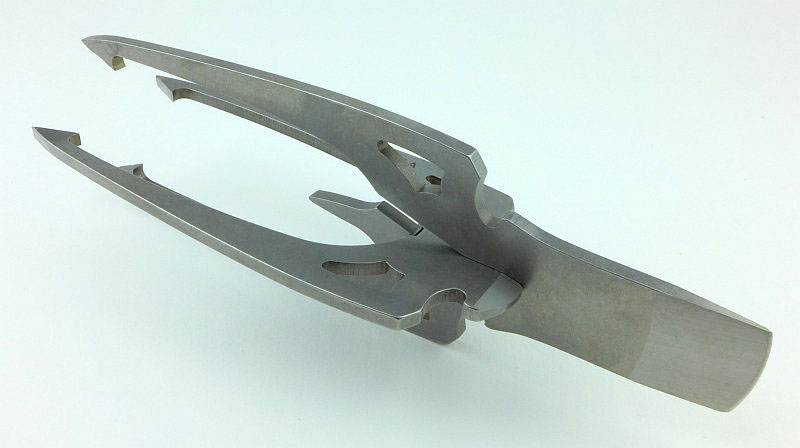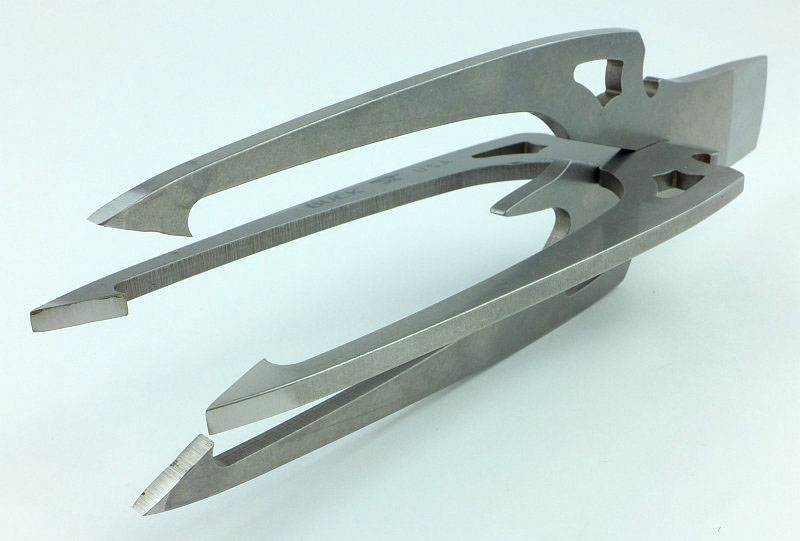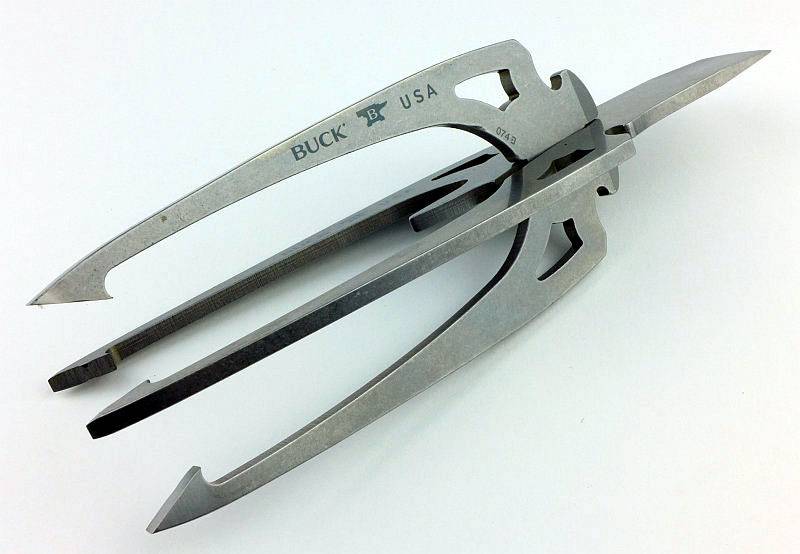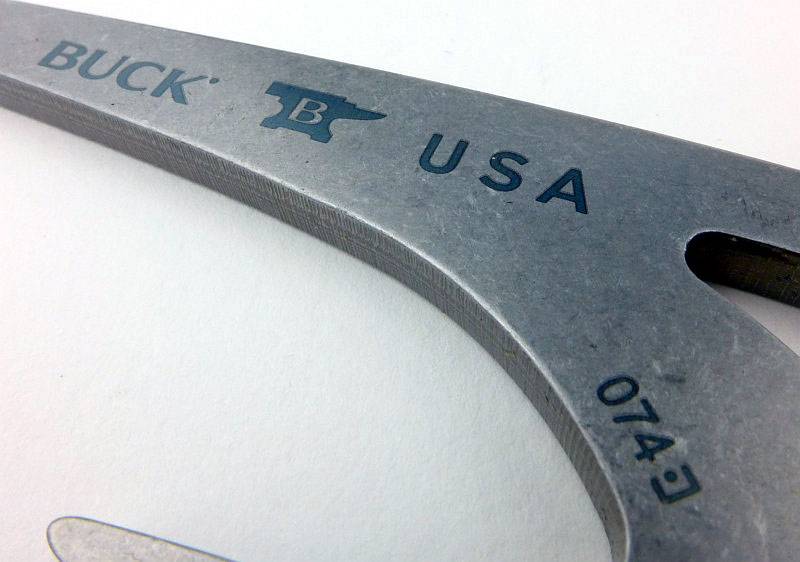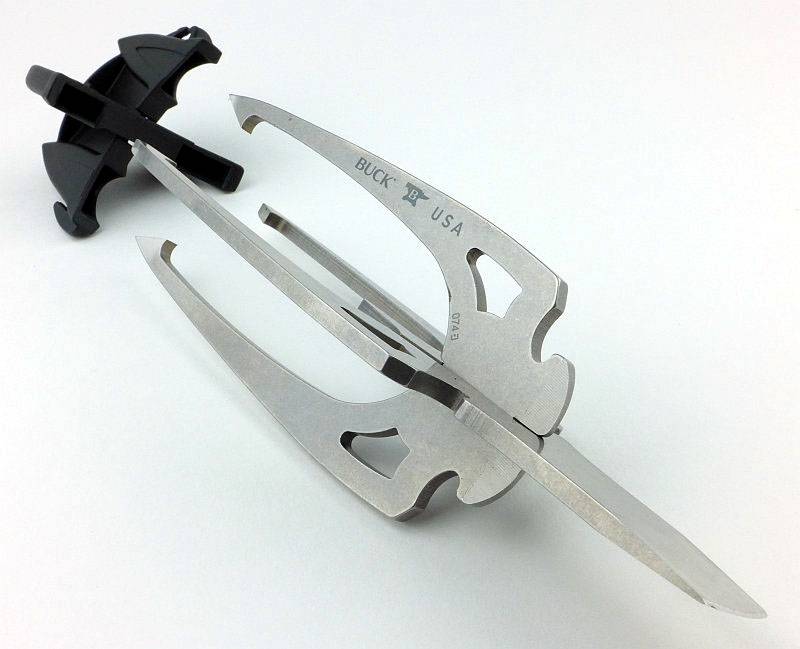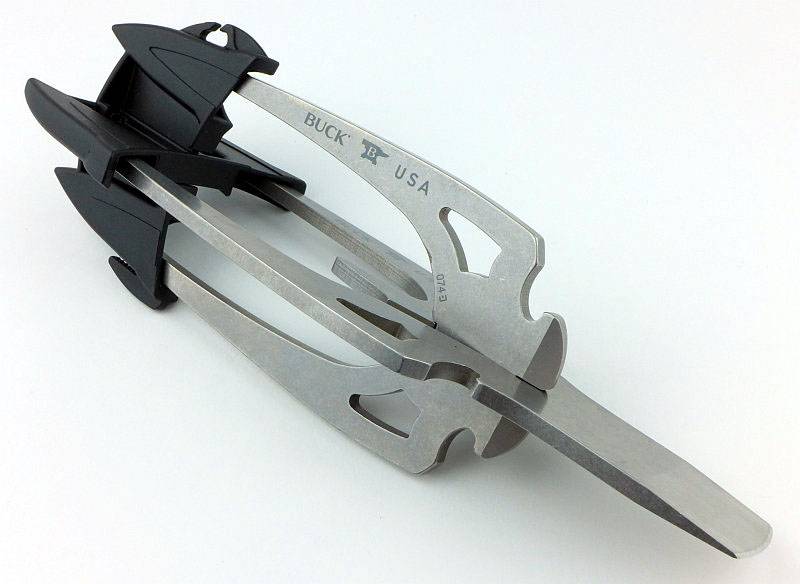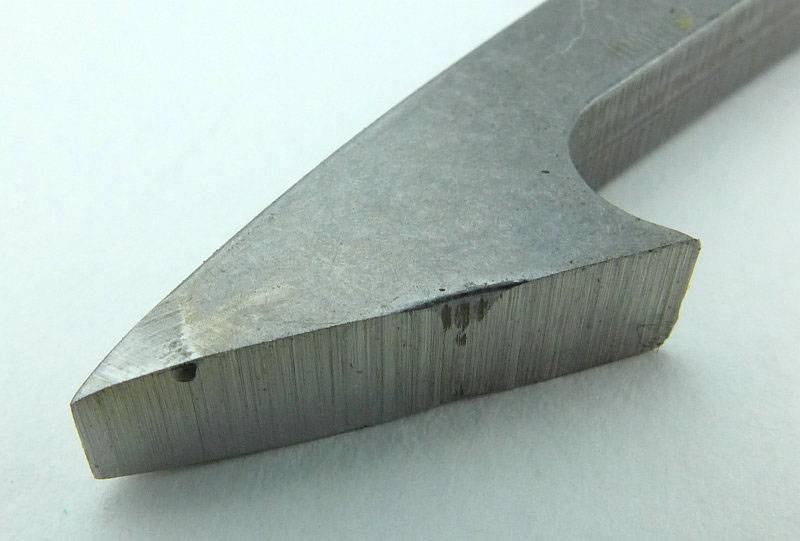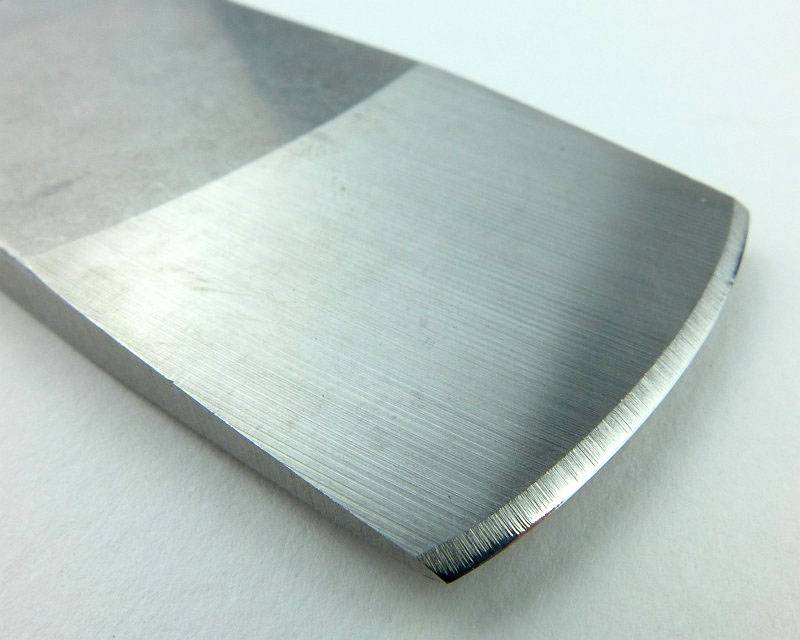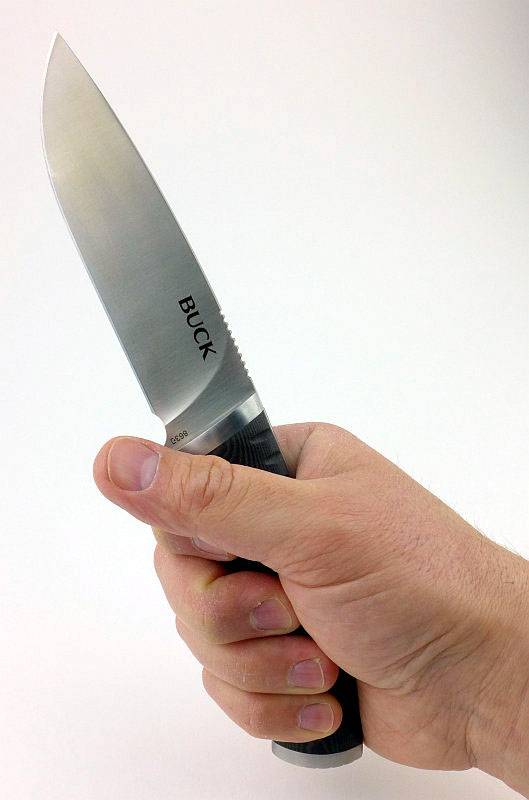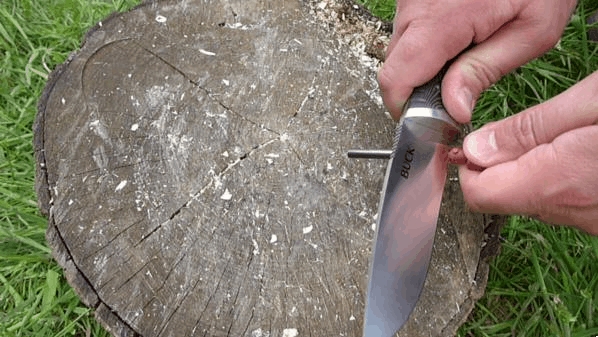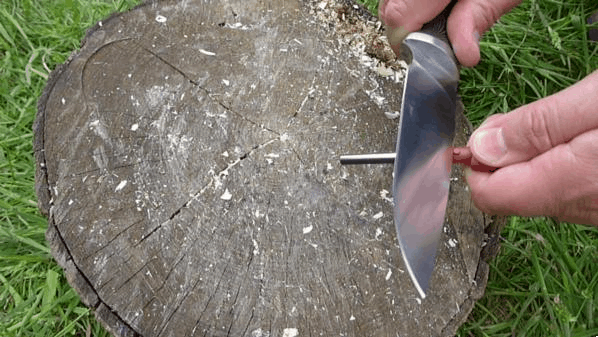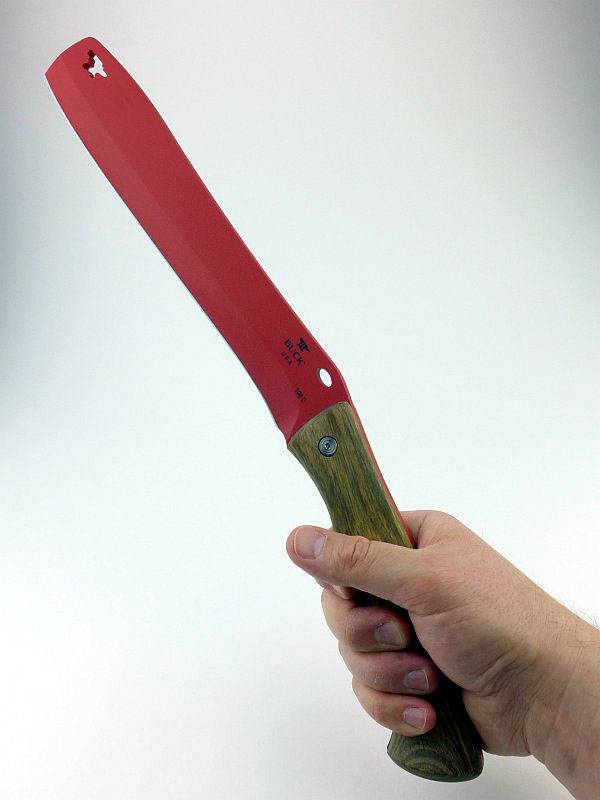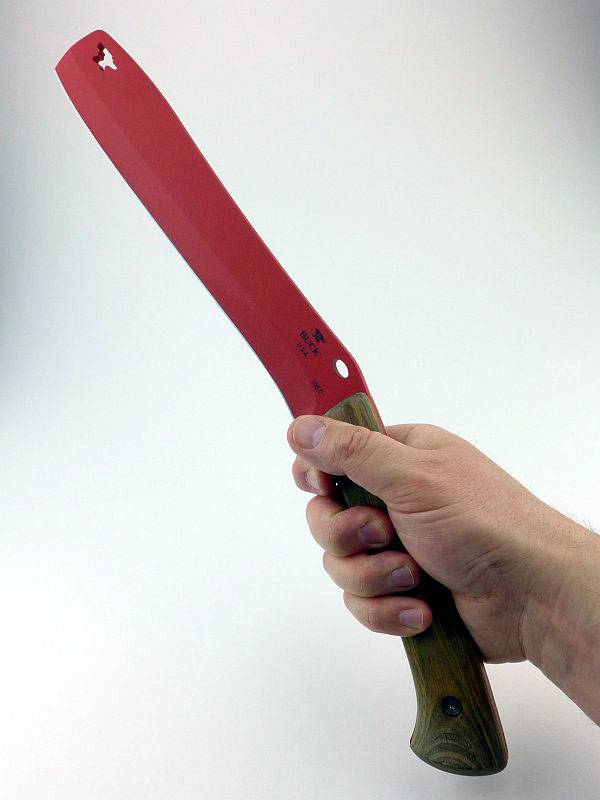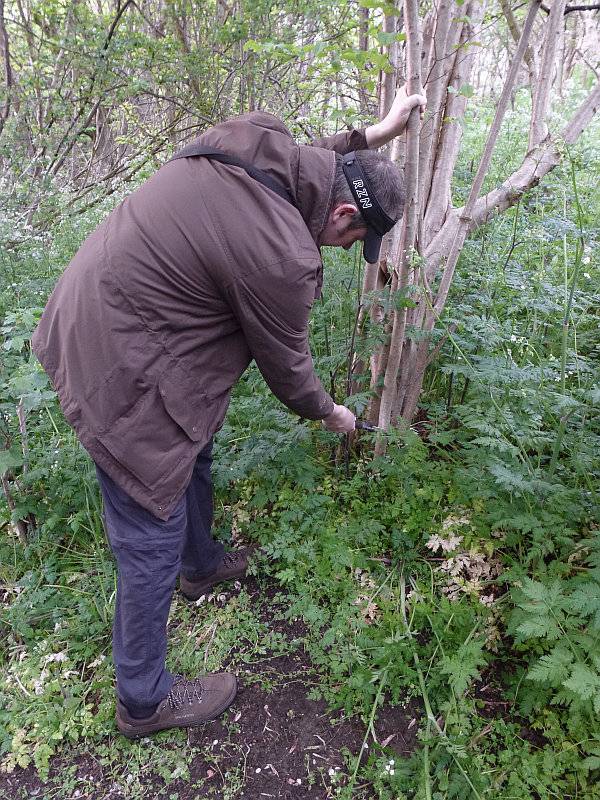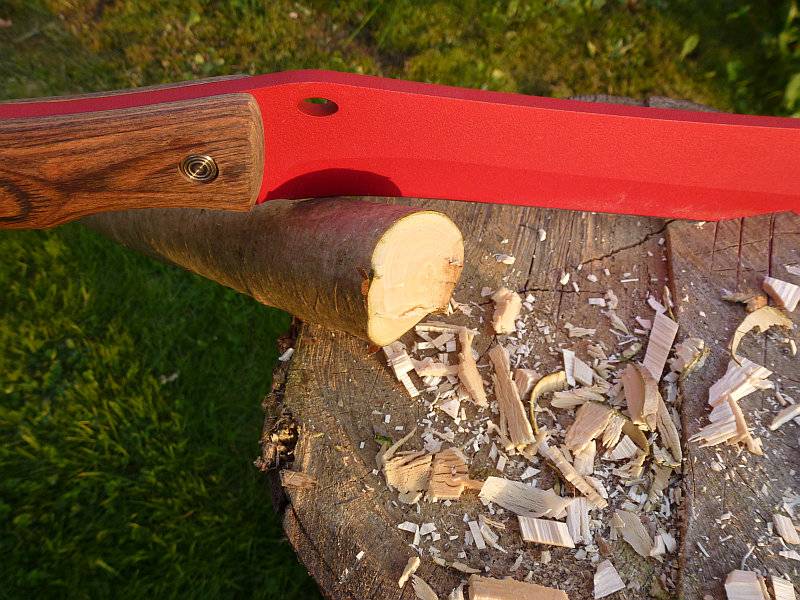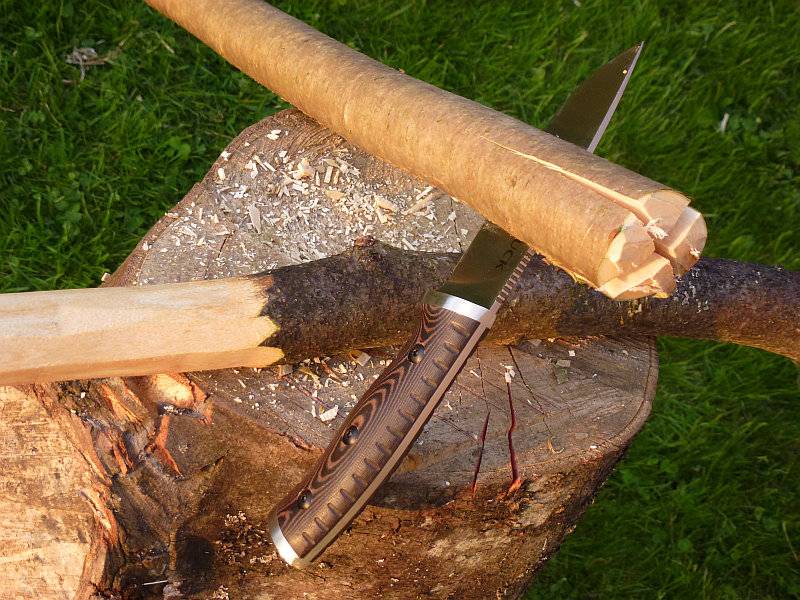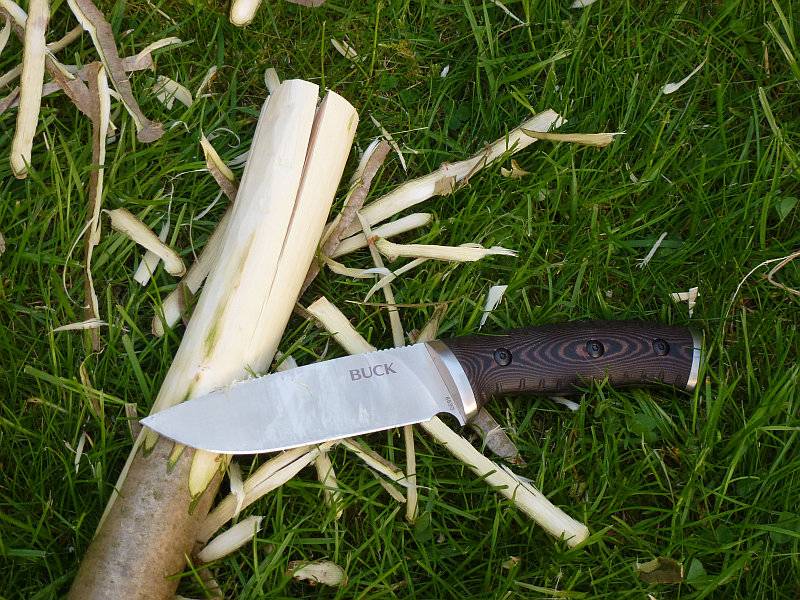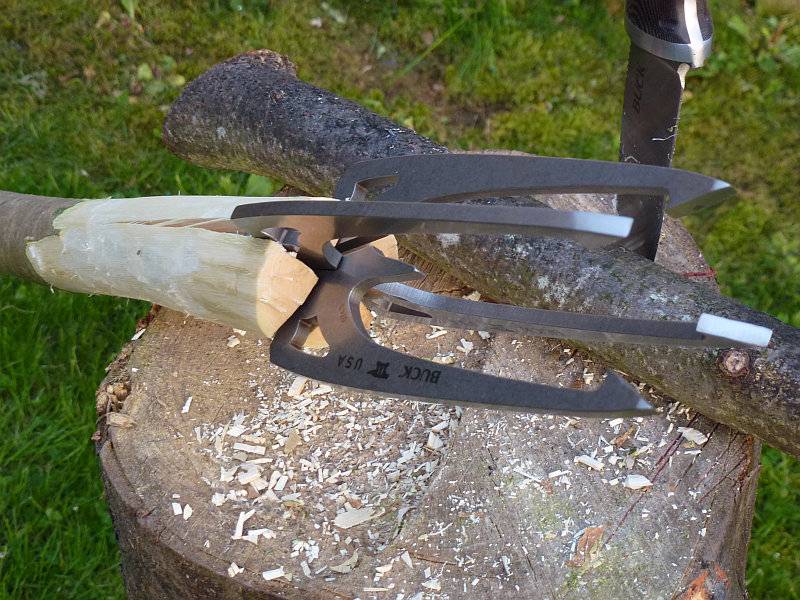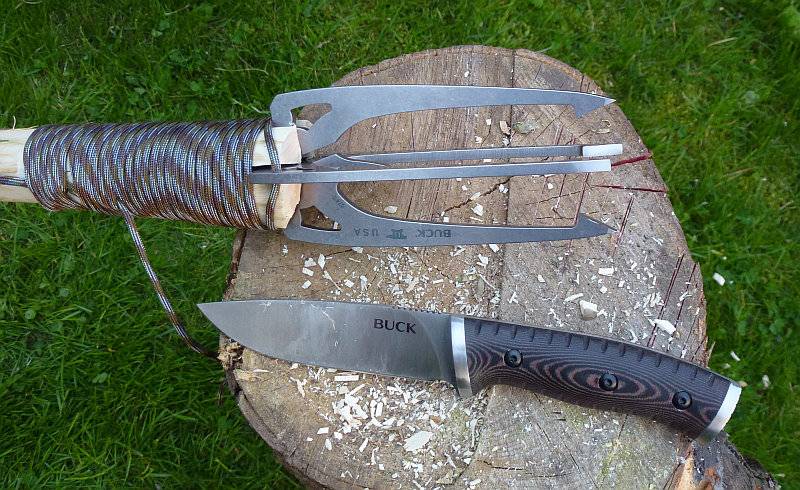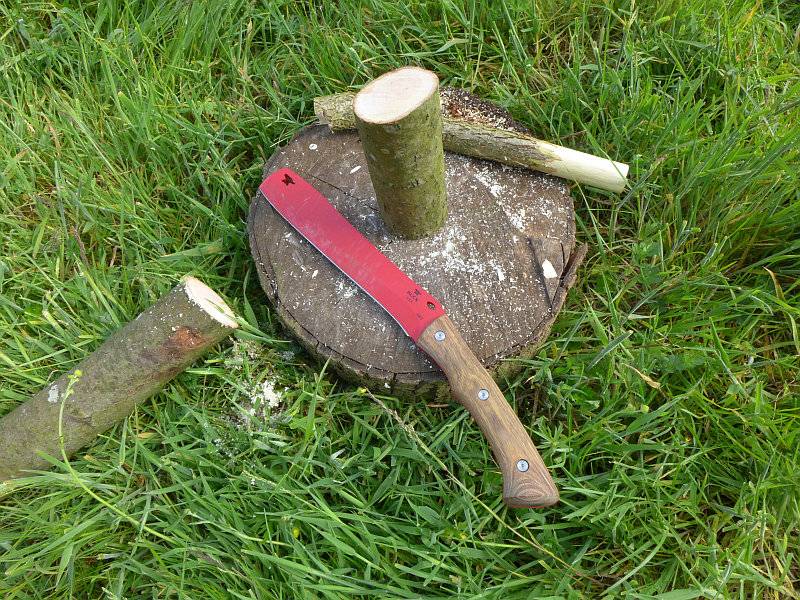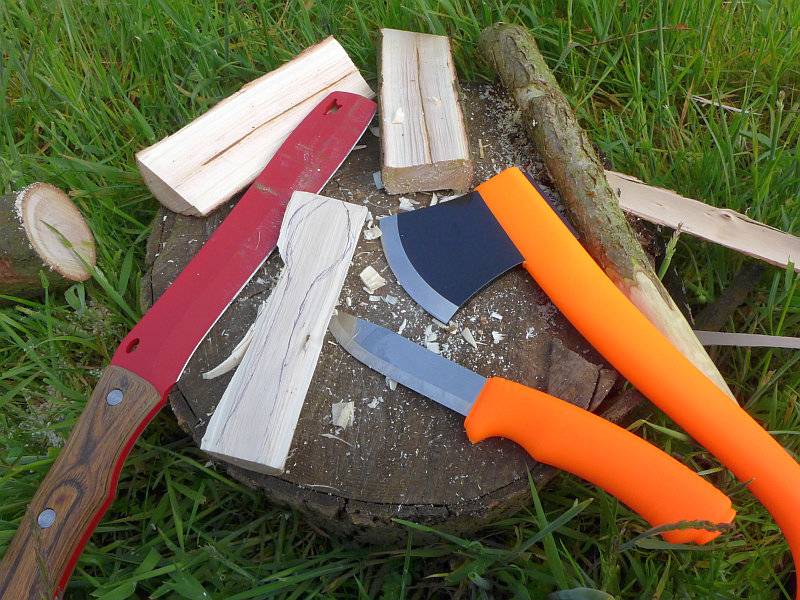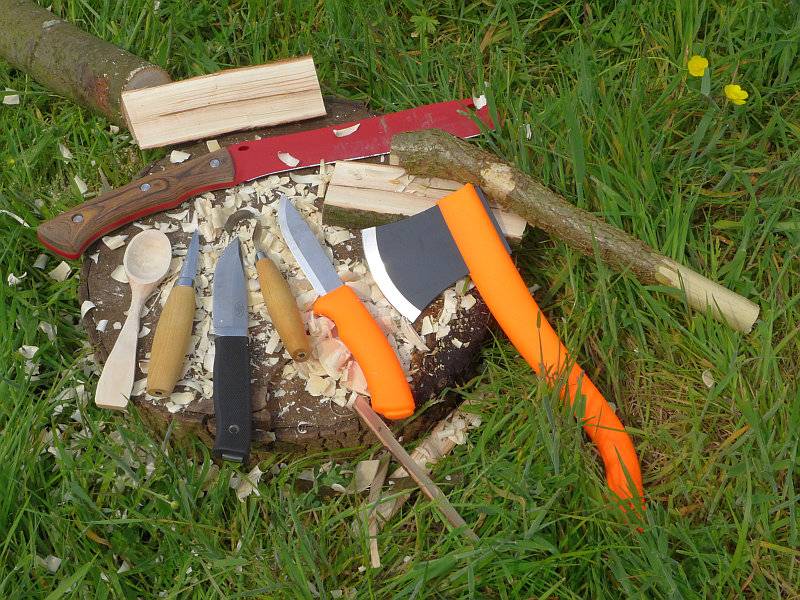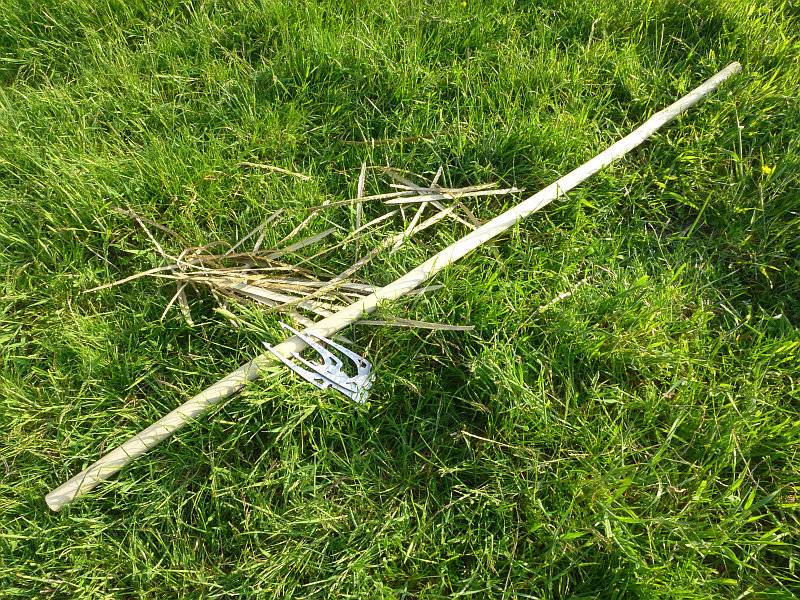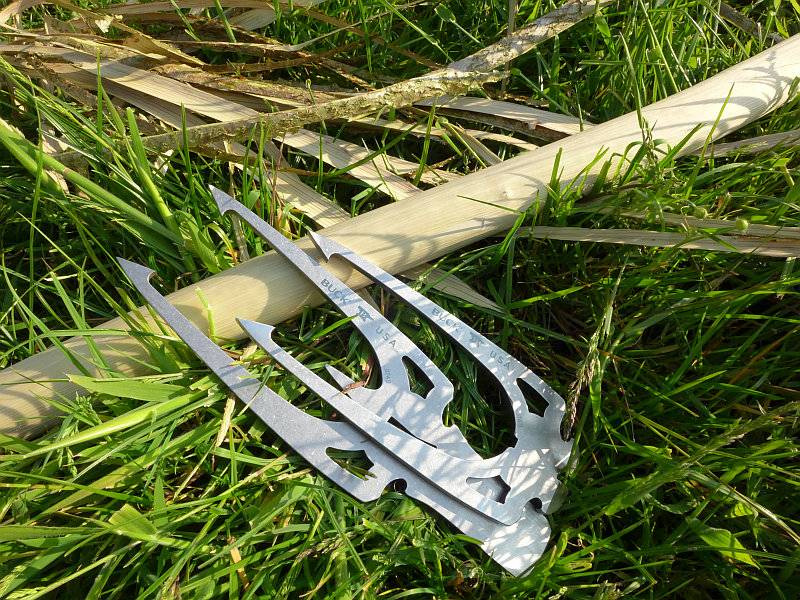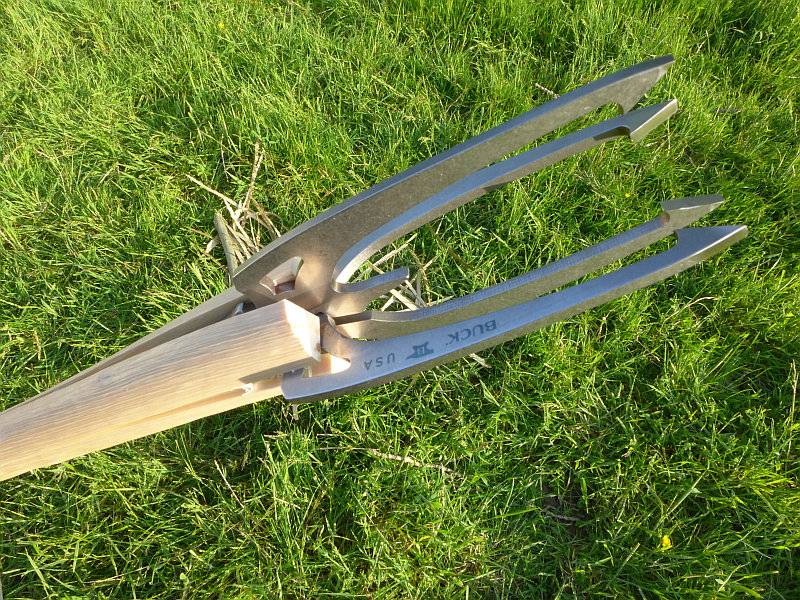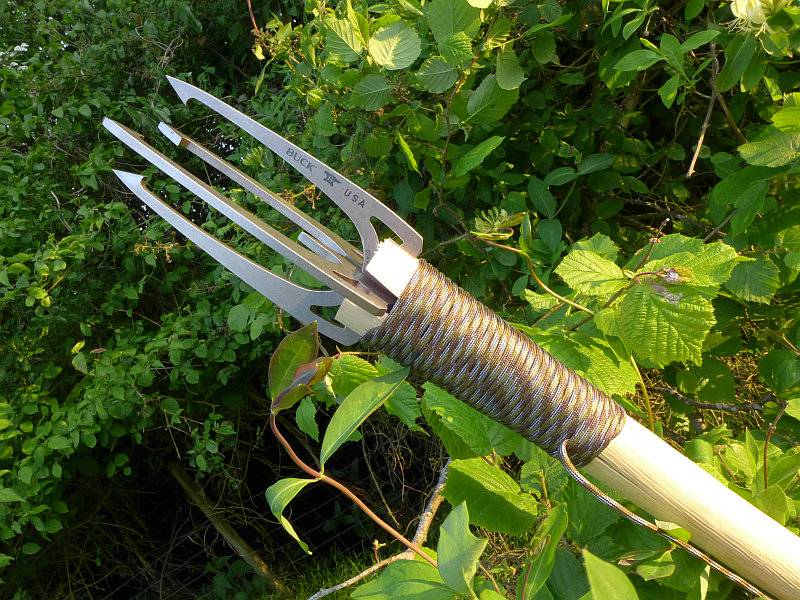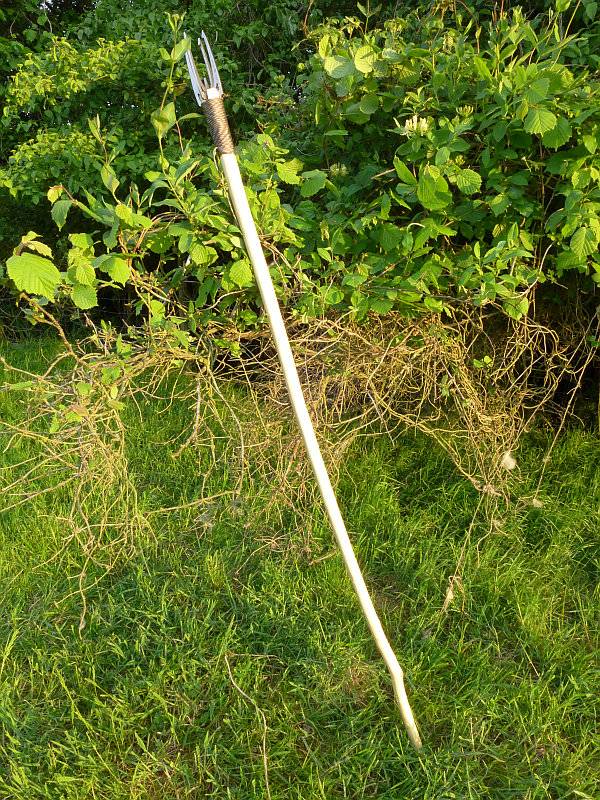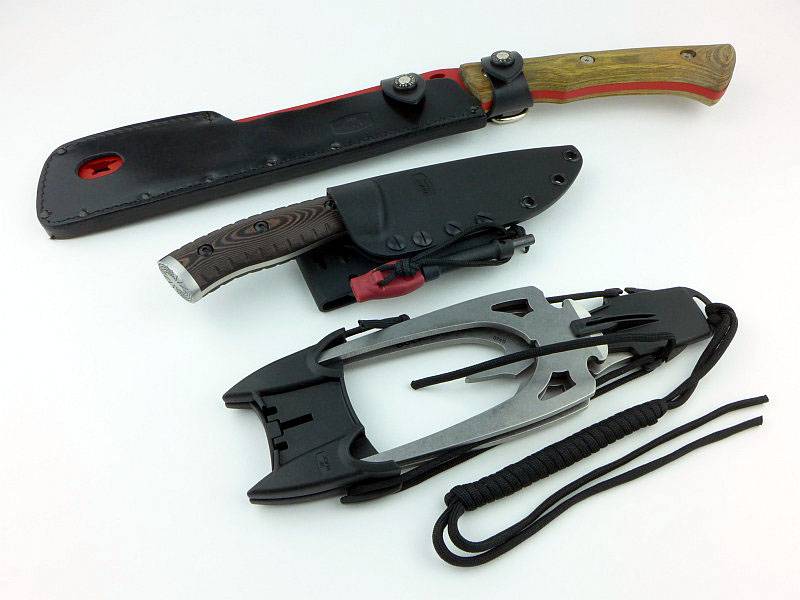One of Zero Tolerance’s new knives for 2016, the 0095BW is one which initially did not particularly stand out for me, but as I’ve got to know it better, I’ve found I very nearly missed out on a real gem.
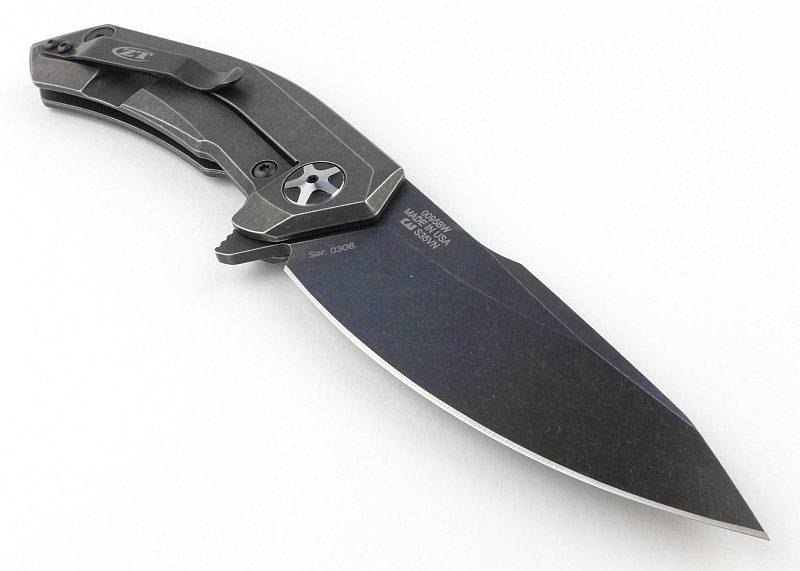
The Blade and Handle Geometry:
Most knife specifications have a basic description of the blade geometry, but in this section I will be taking a more detailed look at geometry and balance.
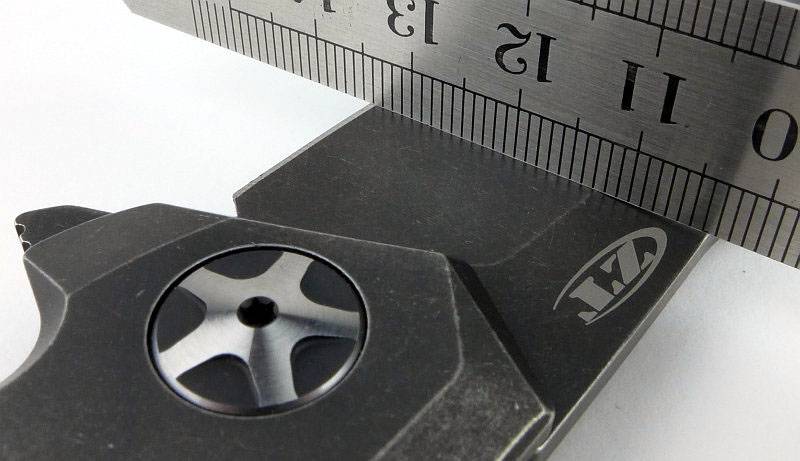
Using a set of gauges and precision measuring equipment including a Vernier protractor, callipers, fixed radius gauges and the unique Arc Master adjustable radius gauge (the one that looks like a crossbow).
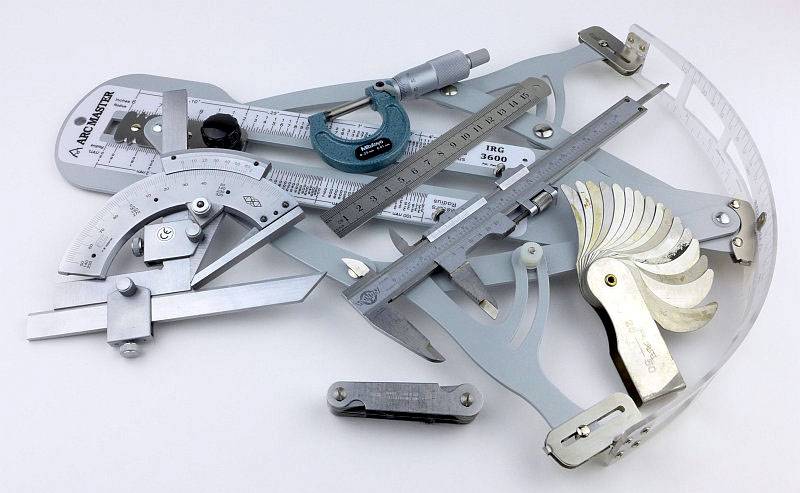
These measurements have been tabulated and are presented along with a few reference blades (8″ Chef’s Knife, 5.5″ Santoku and the popular Fällkniven F1).
Key aspects such as the primary bevel angle, grind type, blade depth, blade thickness, length, weight are detailed, along with balance information.
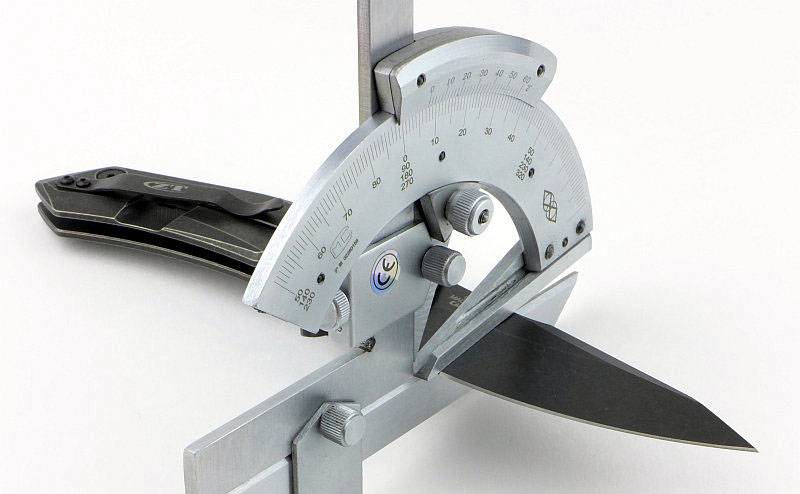
The ‘Balance relative to the front of the handle’ tells you if the knife will feel front heavy, or if the weight is in your hand (a positive value means the weight is forward of the front of the handle). The ‘Balance relative to the centre of the handle’ indicates how close to a ‘neutral balance’ the knife has in the hand.
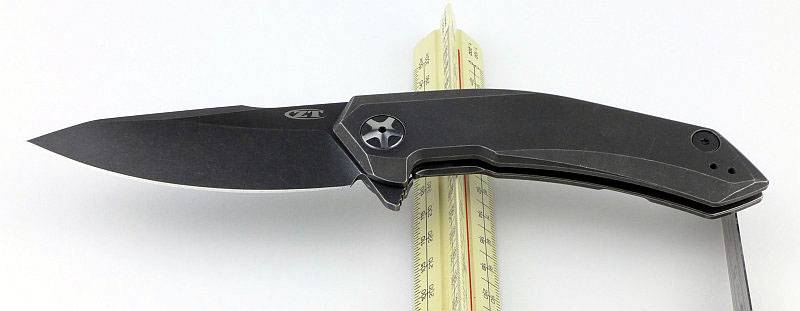
In the case of full convex grinds the approximate centre of the grind is used for the primary bevel angle estimate.
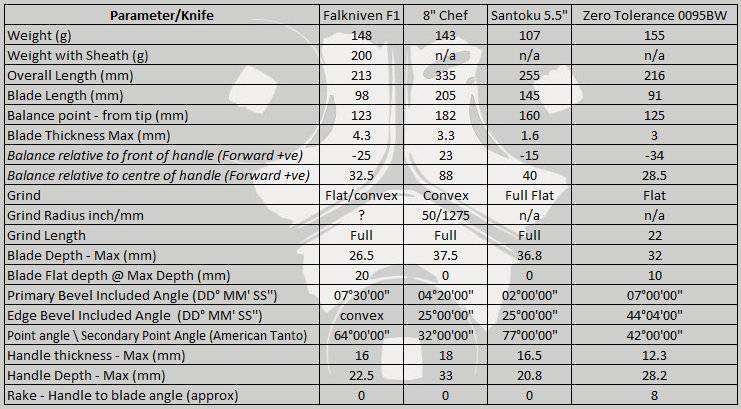
The blade is made from S35VN steel.
A few more details:
The 0095BW’s box.
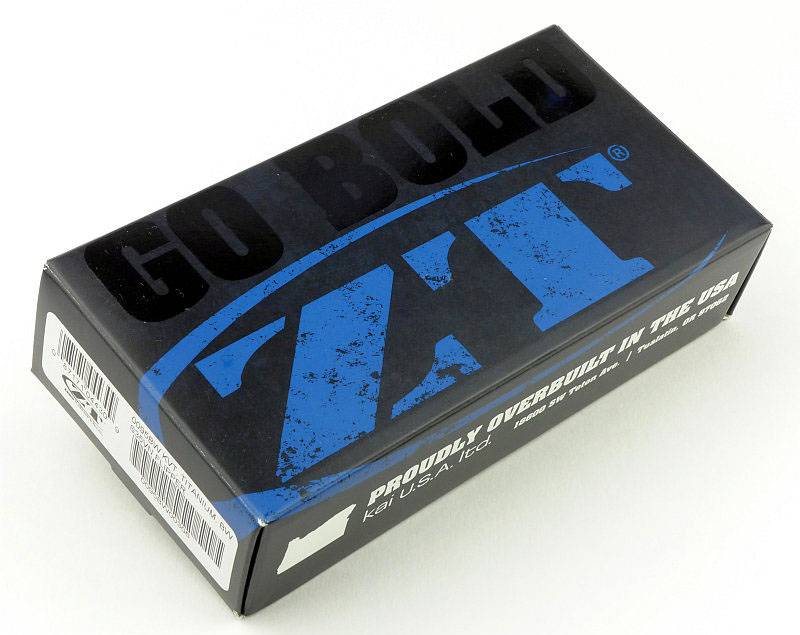
Inside was the 0095BW and a generic ZT information leaflet.
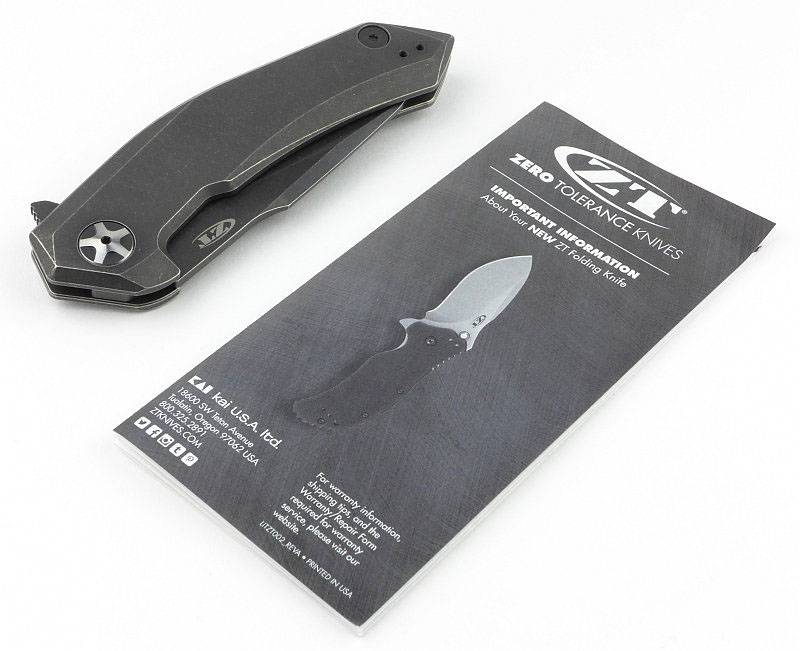
Quiet and subtle, the 0095BW’s stonewashed ‘BlackWash’ finish makes it inconspicuous.
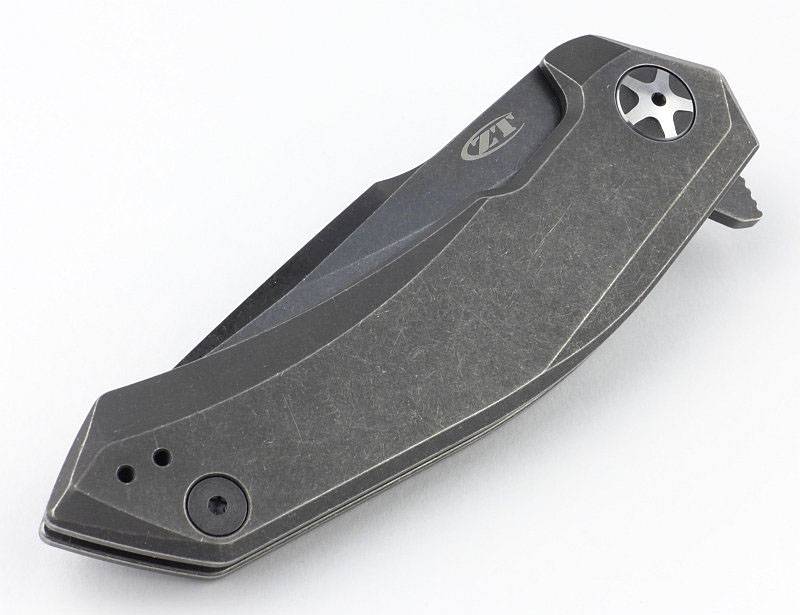
Nicely picking up the edges, the stonewashed finish allows you to really appreciate all the design details and flow of the lines.
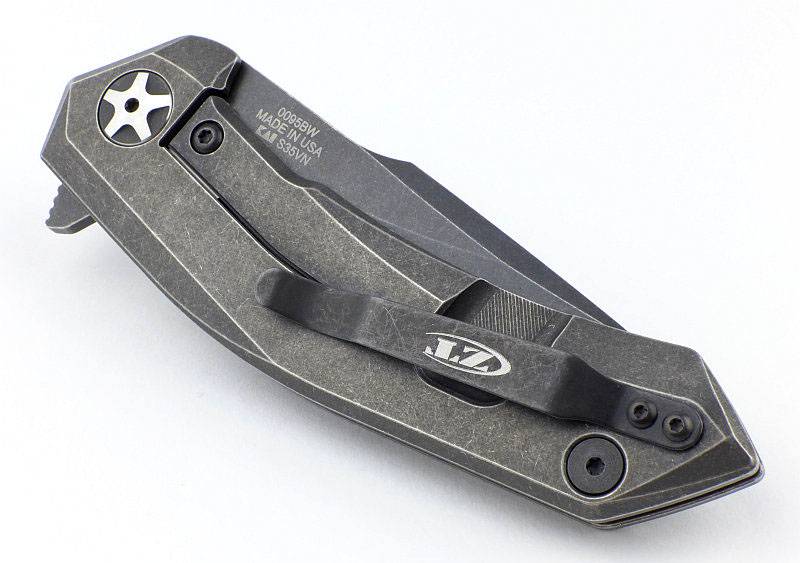
A two-tone pivot adds a decorative element.
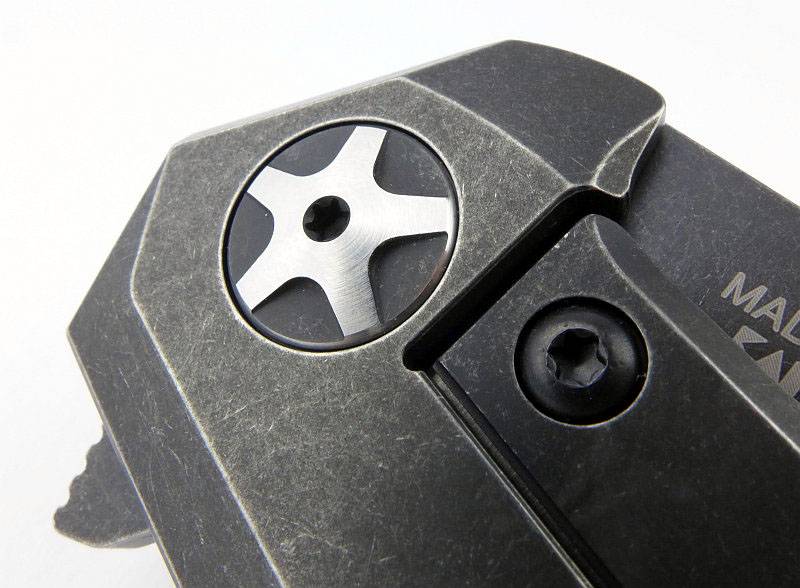
Blade and handle blend into each other with the stonewashed finish, and on this side the model, ‘made in’ and KAI logo can be seen on the blade. Also note the bolt head holding the hardened lockbar insert onto the Titanium lockbar.
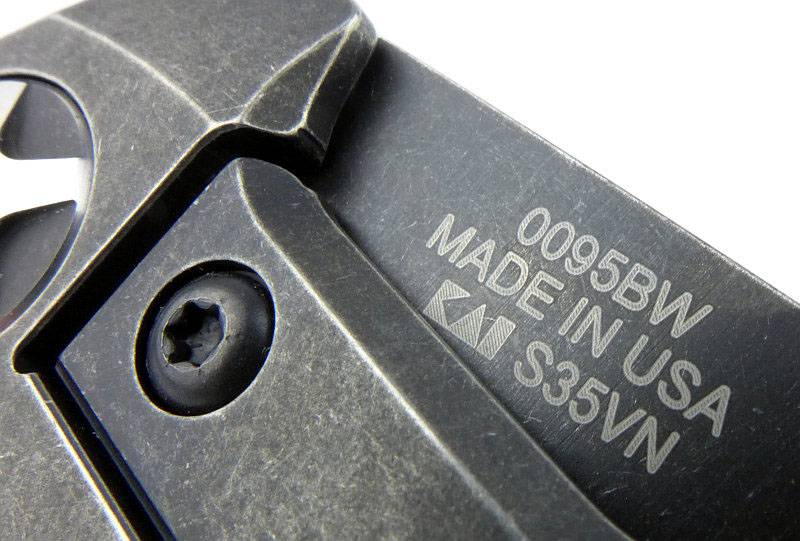
The blade is perfectly centred (even if I’ve not quite captured that in this photo).
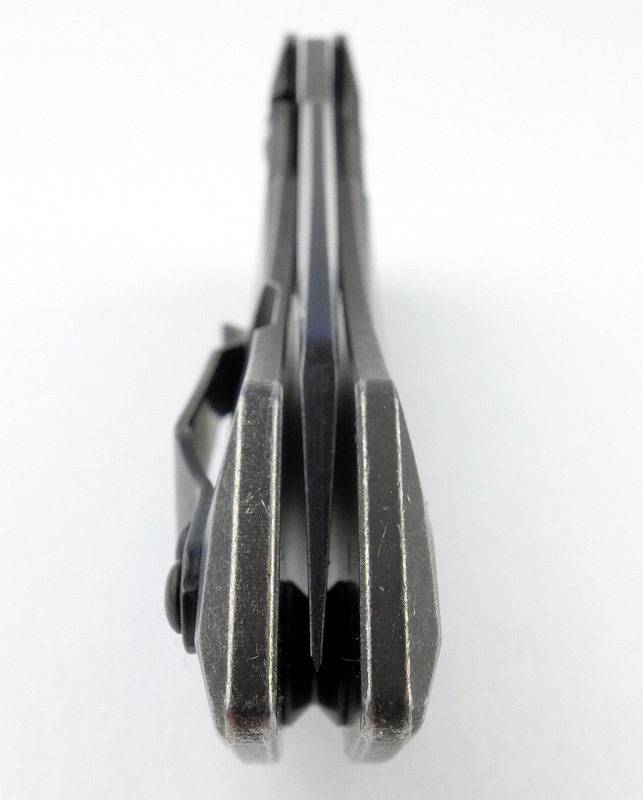
Despite such an understated, almost ‘used’ look, the 0095BW is a stunning looking knife.
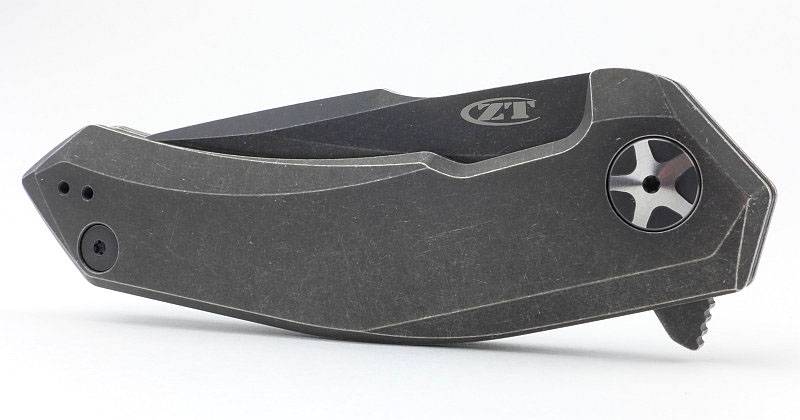
On the other side of the blade is the ZT logo which sits into the lock release cut-out.
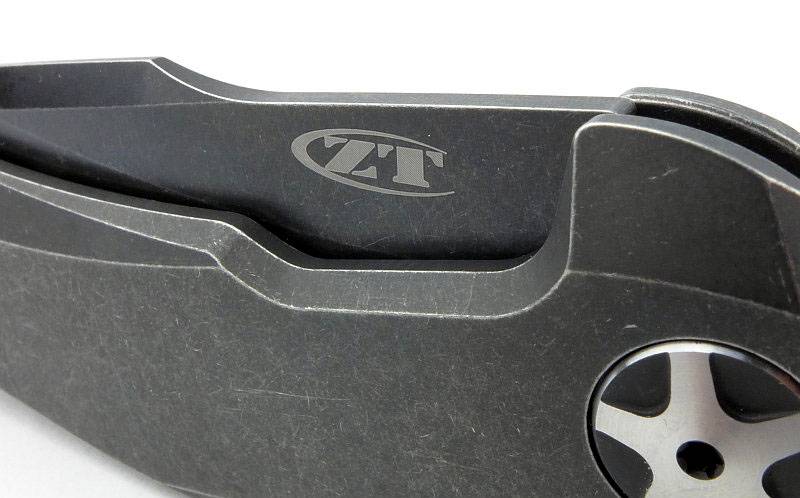
The removable clip also has the ZT logo. Also note how it sits at an angle such that it does not press on the lock bar, but instead on the side of the handle.
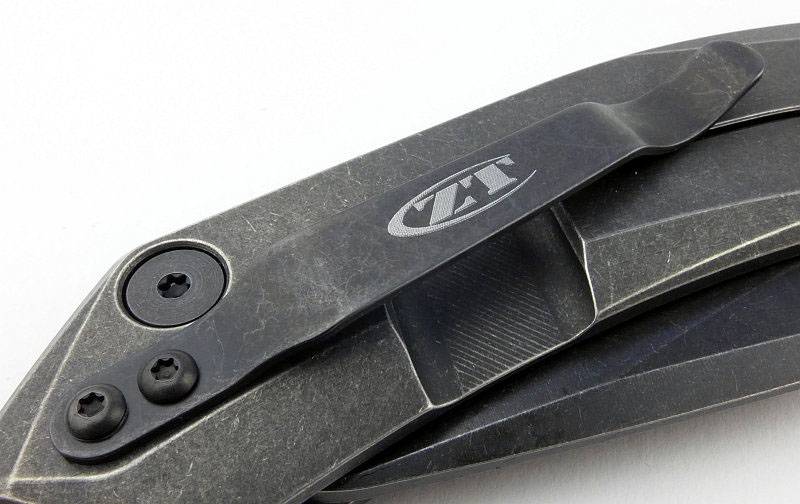
Taking a lower angle view, you can see the thinned area of the handle (under the clip) that creates the lock bar spring.
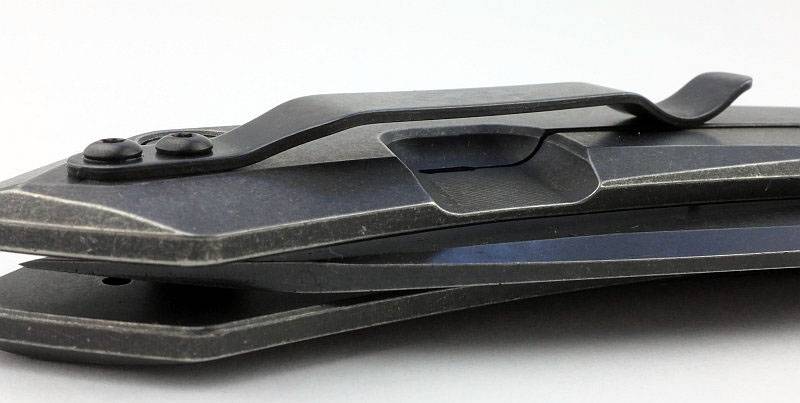
Ready for action the flipper (which doubles as a finger guard) has jimping to provide a good grip.
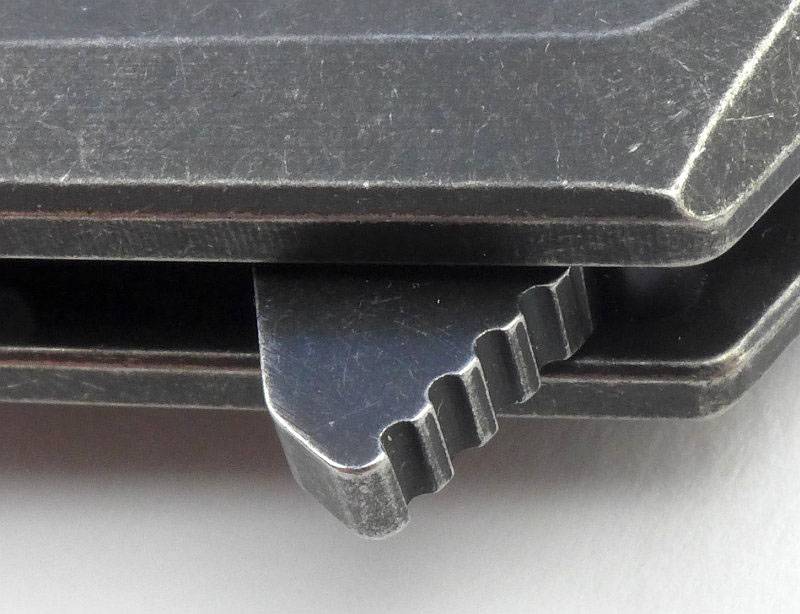
Ready for the clip to be mounted on either side, the 0095BW has the threaded holes for tip-up carry either way round.
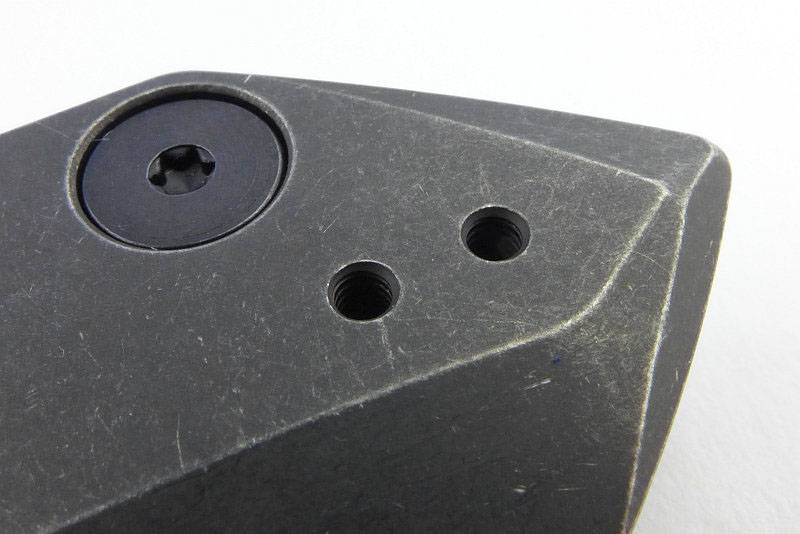
A close view of the stonewashed finish on the handle. This gives an even overall ‘worn’ look, which really helps further marks blend in. The 0095BW is asking to be used.
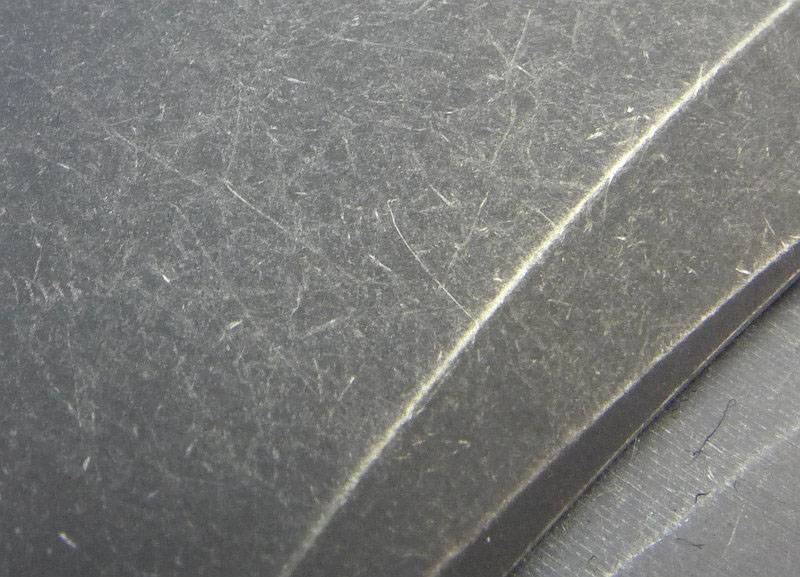
With the blade open you can now see the lockbar release cut-out, and the where you press on the lockbar to release the blade. Notice as well how the lines of the handle flow into the flipper.
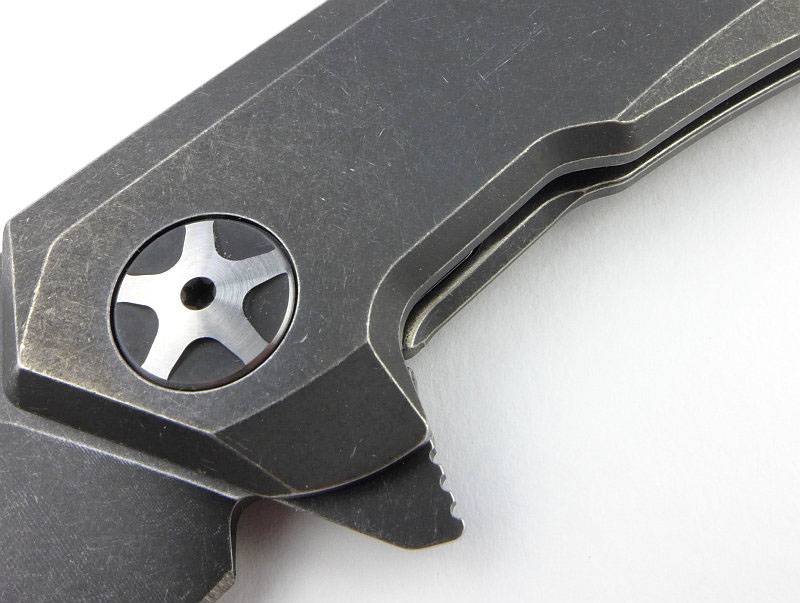
A close-up of the blade tip.
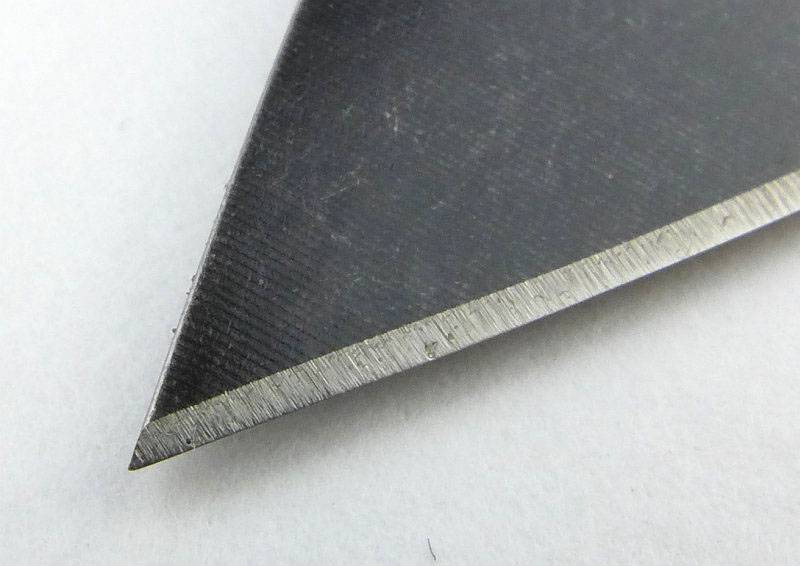
One of those details I consider a must-have, the 0095BW has a choil to terminate the edge and allow proper sharpening.
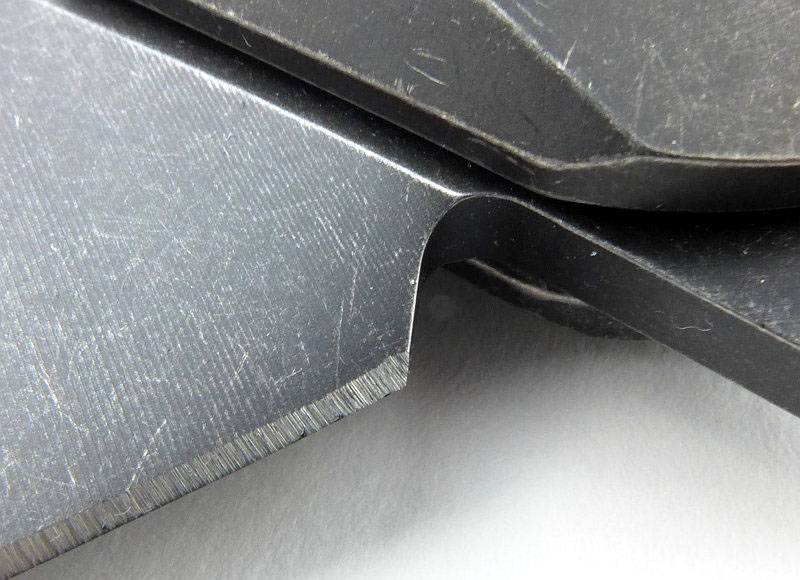
Like the handle, the blade has a stonewashed finish. The main difference here is that the blade grinding lines are visible through the finish.
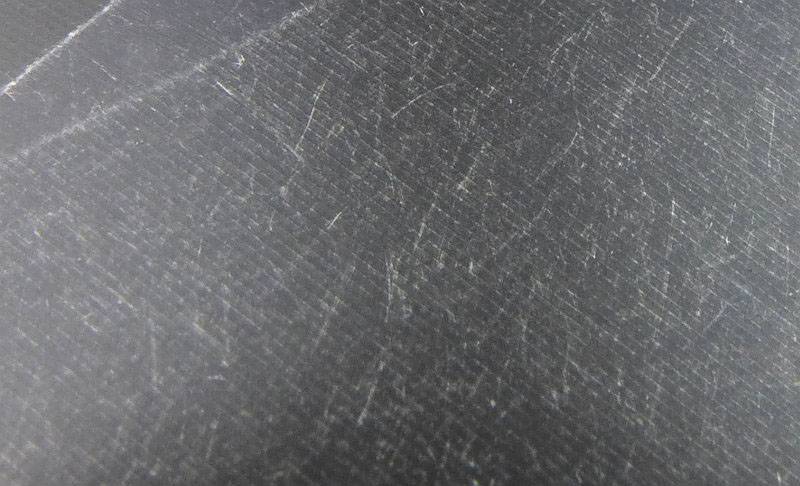
A well rounded plunge line follows the handle’s front edge.
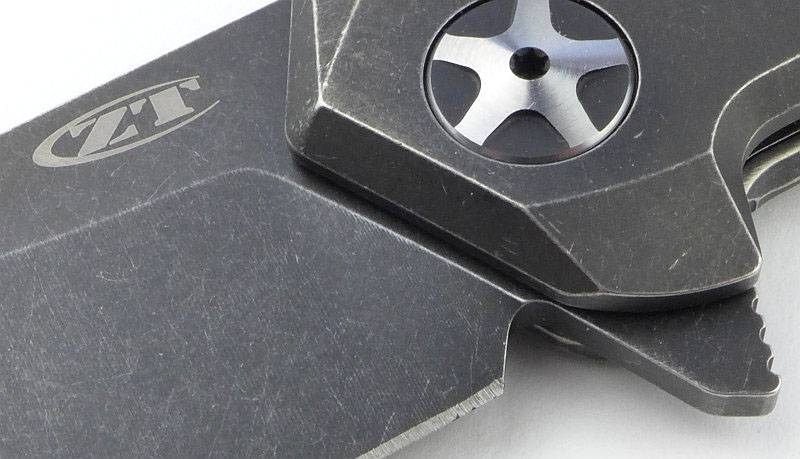
Out of the box, lock engagement is not that deep. However the lockup is rock solid. As it wears this will gradually increase the engagement.
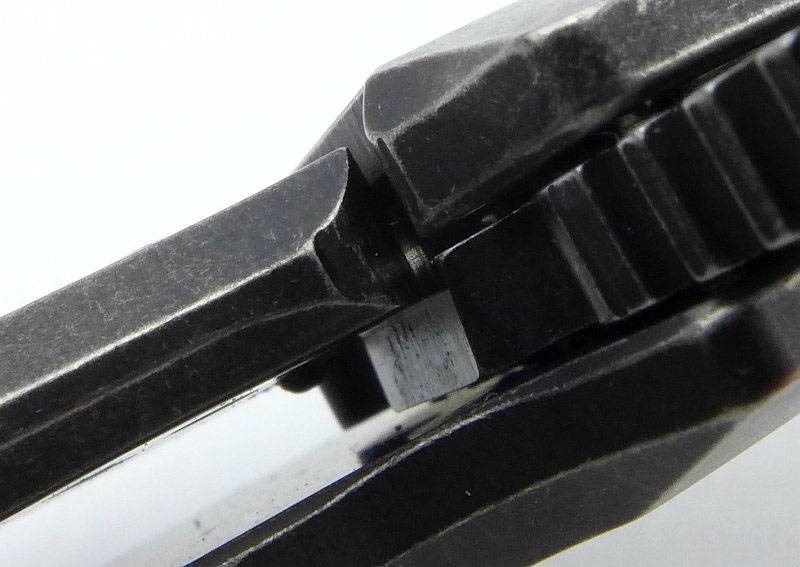
The blade stop is a pin set into the handle, but set into blind holes so it cannot be seen on the side of the handle.
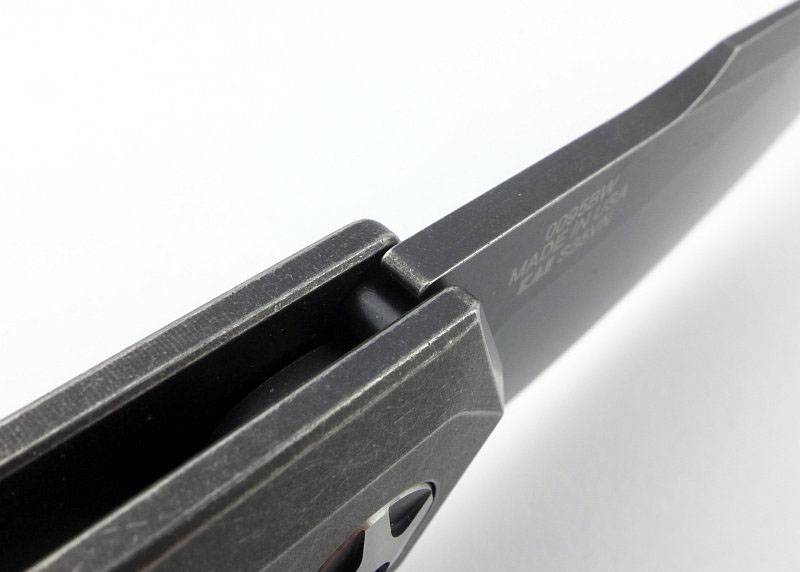
Giving it the really snappy opening is the detent ball which holds the blade closed until enough pressure is applied to the flipper.
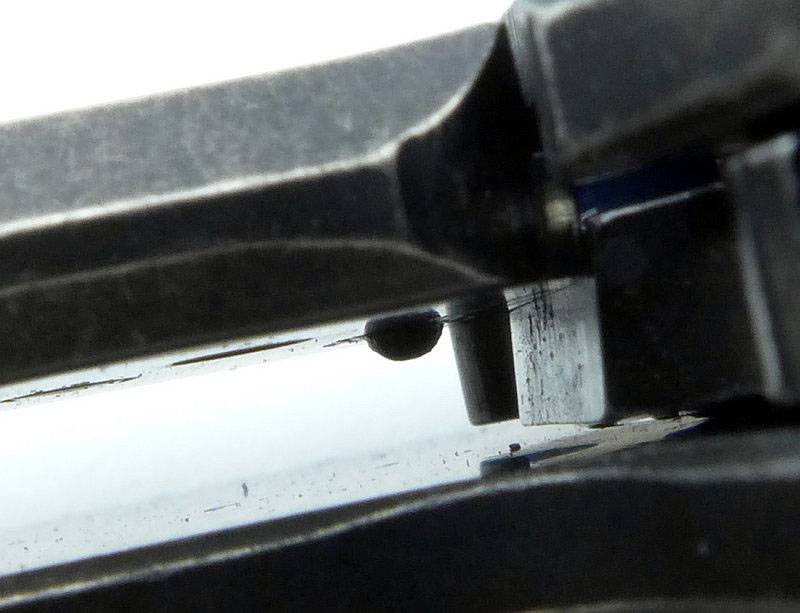
A curving handle acts like a palm swell. The harpoon blade design is one of my favourite blade shapes.
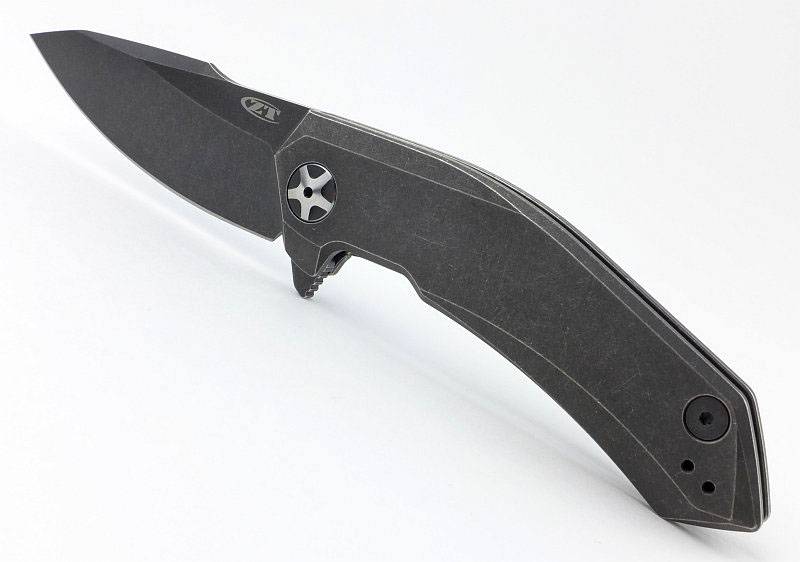
Another look at that harpoon design.
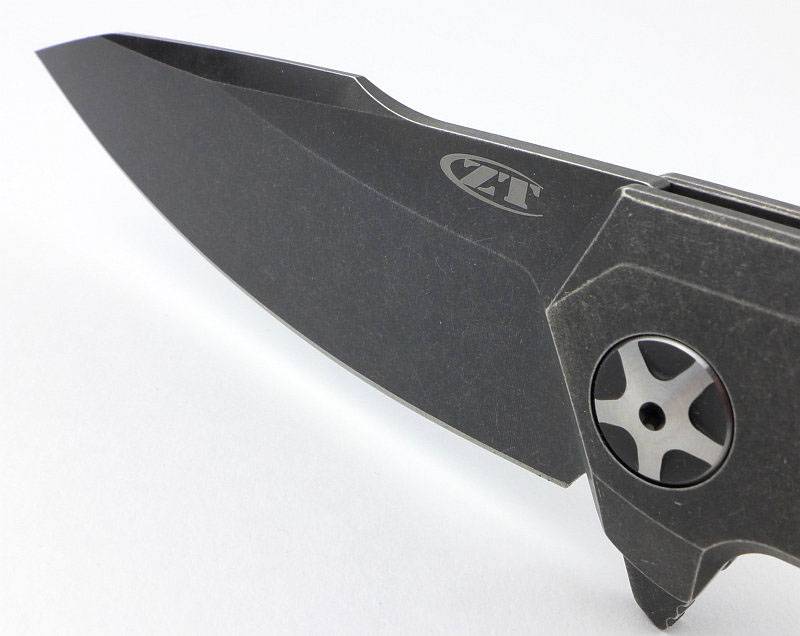
What it is like to use?
Again this knife surprised me, as in contrast to its modest appearance (mainly thanks to the stonewashed finish), the 0095BW displays modern lines and has particularly good slicing and piercing ability. The blade cuts very aggressively and eagerly.
With a narrow point angle, the tip cuts very deeply (frequently deeper than you might want) and means you have to be wary of this. The high flat grind makes this almost a full flat grind and as such it slices very well. Add to this the blade being only 3mm thick and it makes those deep slicing cuts very easily.
The 0095BW is a good size folder with 3 1/2″ blade, yet remains slim, light and easy to pocket due to the Titanium used for the handles. This cuts both ways though, and does make the handle a little thin for heavy or extended work. As an EDC blade for sporadic cutting, the compromise is ideal.
Holding for a piercing cut, the flipper serves as a finger guard and gives you a solid surface to push forward with. (I take XL size gloves)
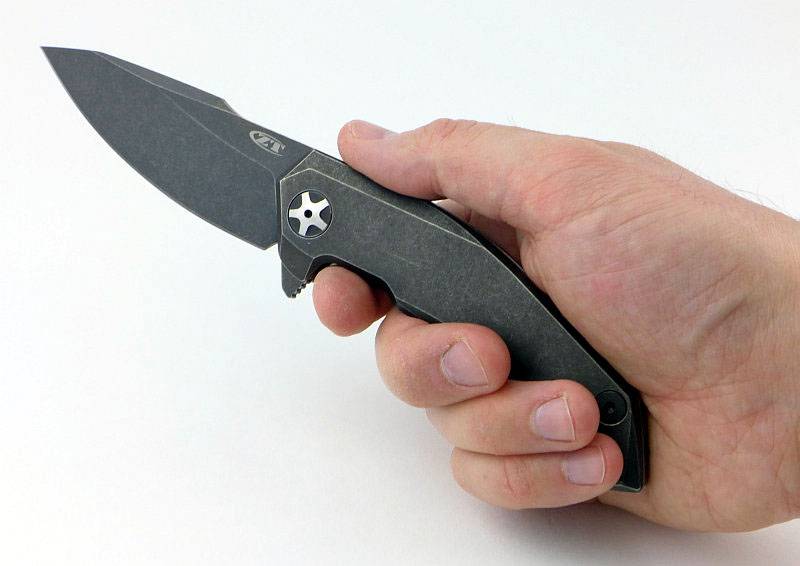
Taking up a power grip, the harpoon blade shape fits in perfectly with a thumb positioned on the spine for a stronger cutting force. The curve of the handle sitting nicely into your palm.
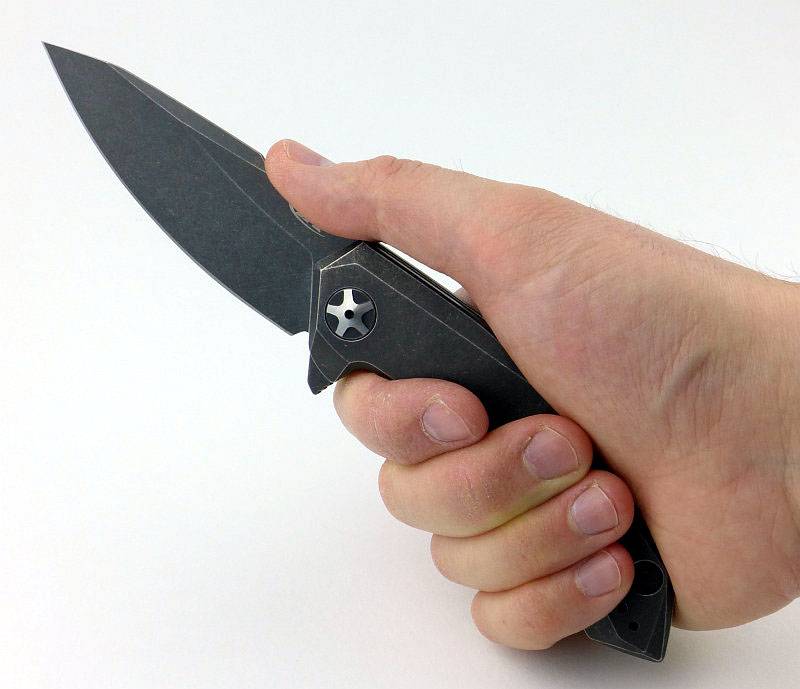
While looking at grip, a small aside to take a look at a common issue people have with flippers – that of finding them difficult to flip. The most common reason people have difficulty with flippers that use integral locks, is the accidental pressure on the lock bar. The lock bar has the blade retention detent, and is you push on the lock bar you effectively prevent the detent from slipping and so stop the blade deploying. You need to ensure that when you grip the closed knife you keep your fingers off the lock bar, and if you do this, sliiiiCK, the blade flies open and locks firmly. For a knife where the pocket clip sits fully on the lock bar (not the case here) you need to watch that as well.

Once you have the hang of gripping the knife correctly for the flip, it starts to become addictive and usually your flipping session ends with someone shouting at you to “STOP IT” (or is it just me that has that happen?).
In terms of its flip, this is one area Zero Tolerance have worked hard to get right. The design of the detent allows a good amount of force to build and then a clean release of that force as the blade breaks free. Using ZT’s KVT ball-bearing makes the blade motion super smooth, in fact if you push the lock bar out slightly to stop the detent ball pressing on the side of the blade, the blade will swing smoothly under its own weight. The result of a tuned detent combined with the KVT ball-bearing, is a very positive blade deployment which you might even think is assisted. Lock-up is absolutely solid with no play at all.
A quick mention of the ZT BlackWash finish – this is a bit like getting stonewashed jeans, it has almost been worn-in for you. The finish makes it look used, and easily masks any further marks from use, so unlike other types of finish that can be painful to see the first signs of use on, the 0095BW is just asking to be used.
To give an idea of scale, here it is next to the Fällkniven F1 and a Spyderco UK Pen Knife.

Review Summary
The views expressed in this summary table are from the point of view of the reviewer’s personal use. I am not a member of the armed forces and cannot comment on its use beyond a cutting tool or field/hunting knife.
Something that might be a ‘pro’ for one user can be a ‘con’ for another, so the comments are categorised based on my requirements. You should consider all points and if they could be beneficial to you.
| _______________________________________________ | _______________________________________________ |
| Things I like | What doesn’t work so well for me |
| _______________________________________________ | _______________________________________________ |
| Understated look using ZT’s BlackWash finish. | Handle too slim for extended use or heavy cutting. |
| Extremely effective for slicing or piercing. | Blade tip makes it easy to cut too deeply. |
| Silky and positive flip action. | Pivot bearing is not sealed so could attract dust and grit. |
| Light weight. | Careful placement of fingers required for an easy flip. |
| Slim design is easy to pocket. | Can become slippery with wet or greasy hands due to a lack of grip patterns or jimping. |
| Uses S35VN steel. | |
| KVT pivot ball-bearing. | |
| Reversible clip. | |
| Excellent fit and finish. |
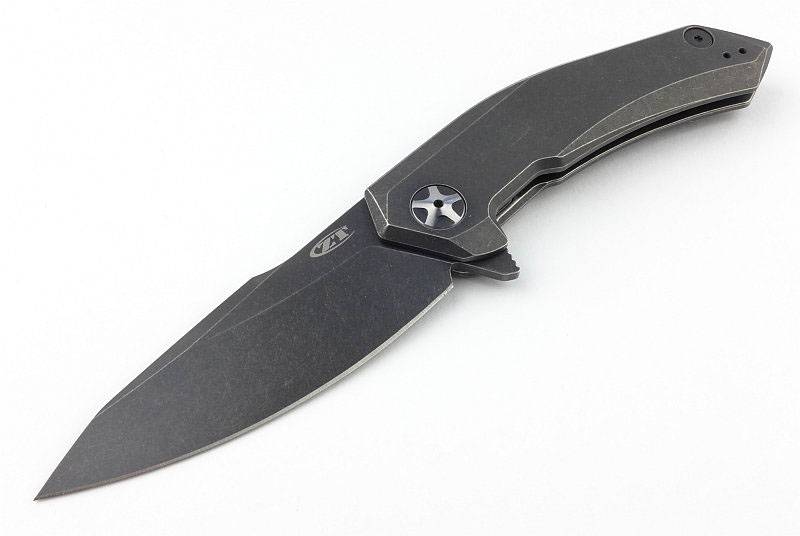
Discussing the Review:
Please feel free to add comments to the review, but the ideal place to freely discuss these reviews is on a forum. If you started reading the shorter forum version of the review, but followed the link this full exclusive review, please return to that forum to discuss the review there.
If you read the review entirely on Tactical Reviews, please consider one of the following to join in any discussion.
EdgeMatters – Sponsored Reviews (UK based Forum for Knife Makers and Collectors)
BladeForums – Knife Reviews (US based Forum for Knife Discussion)
CandlePowerForums – Knife Reviews Section (Largest and Friendliest Flashlight Community Forum)

